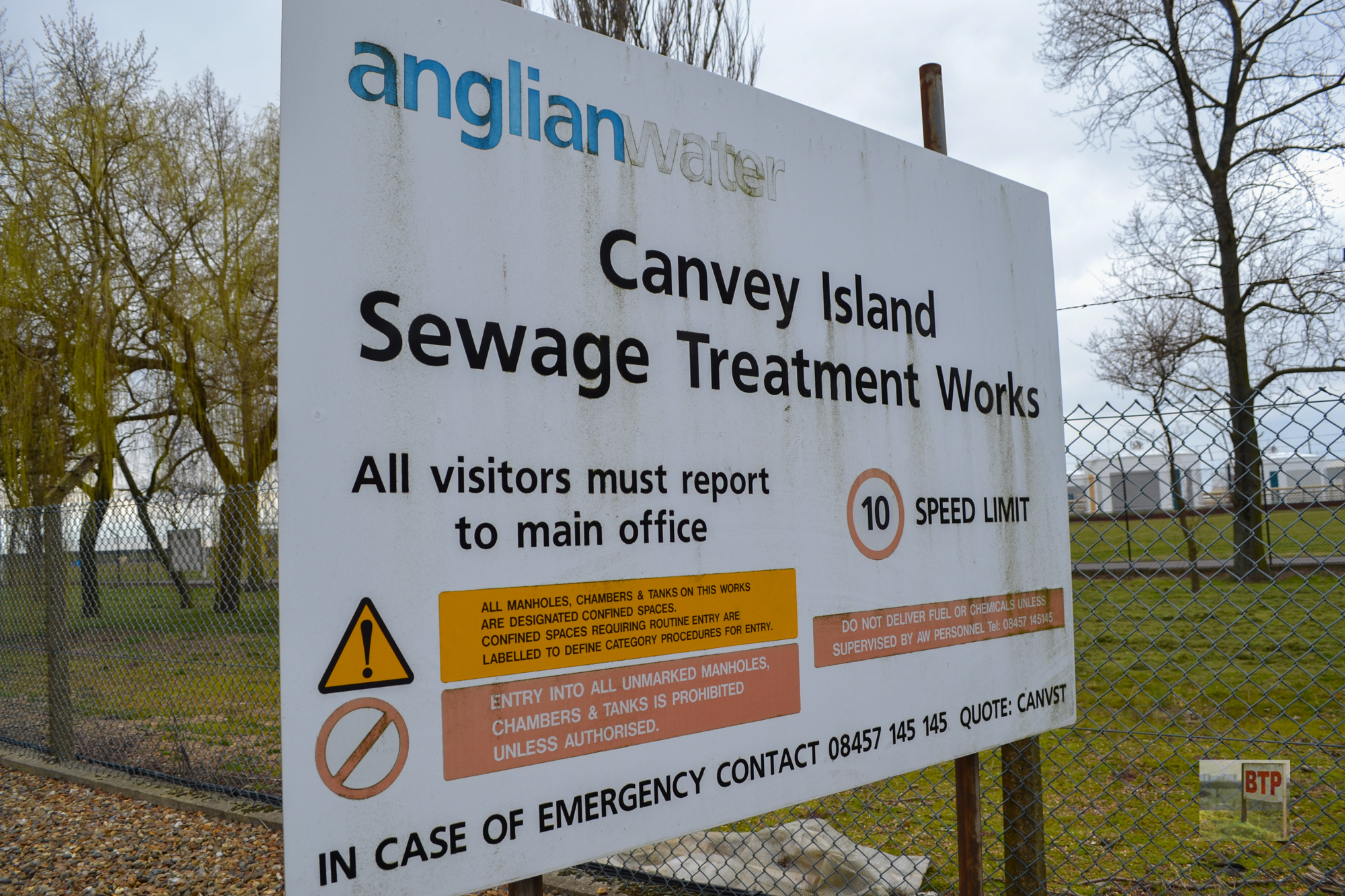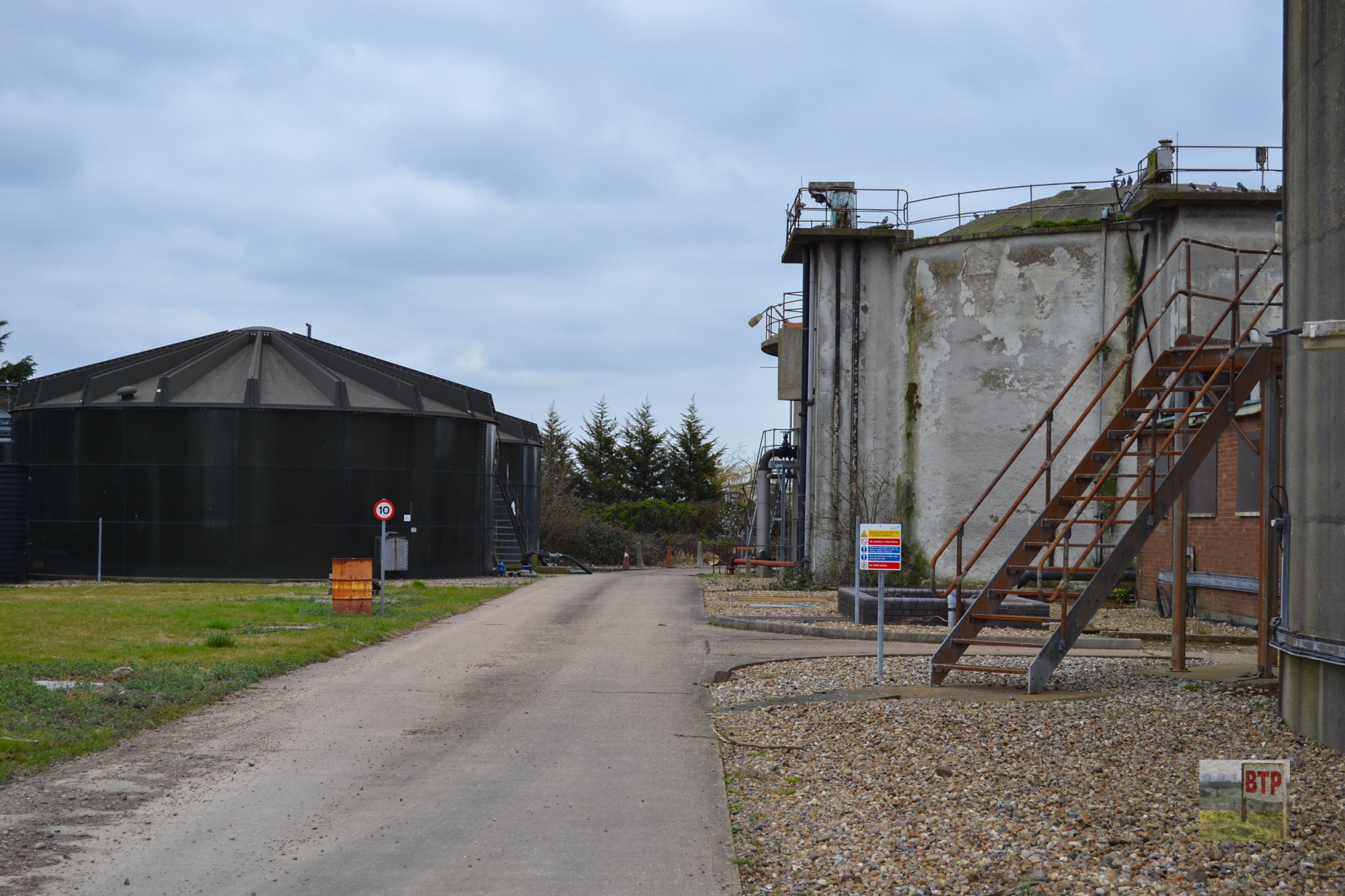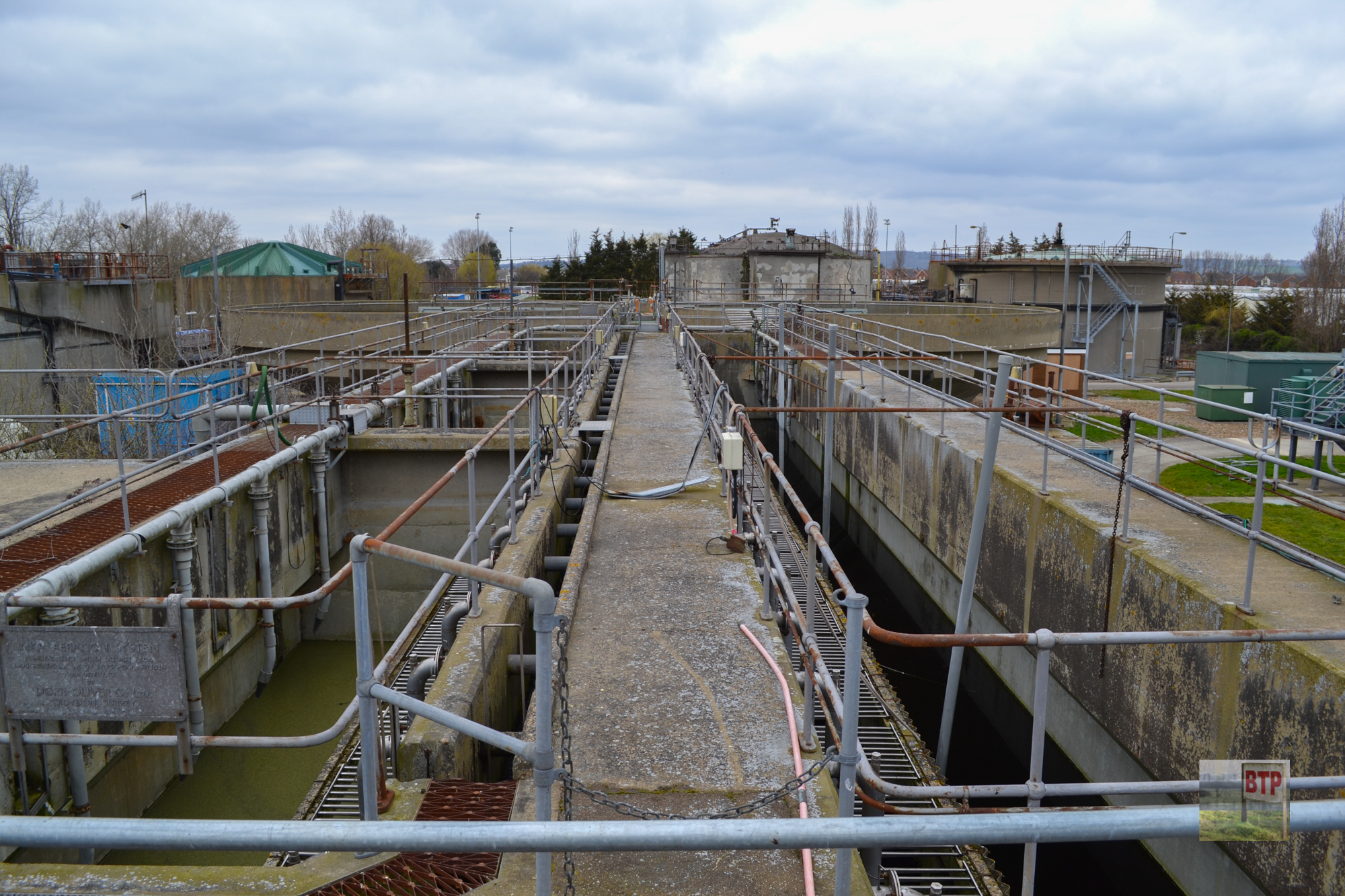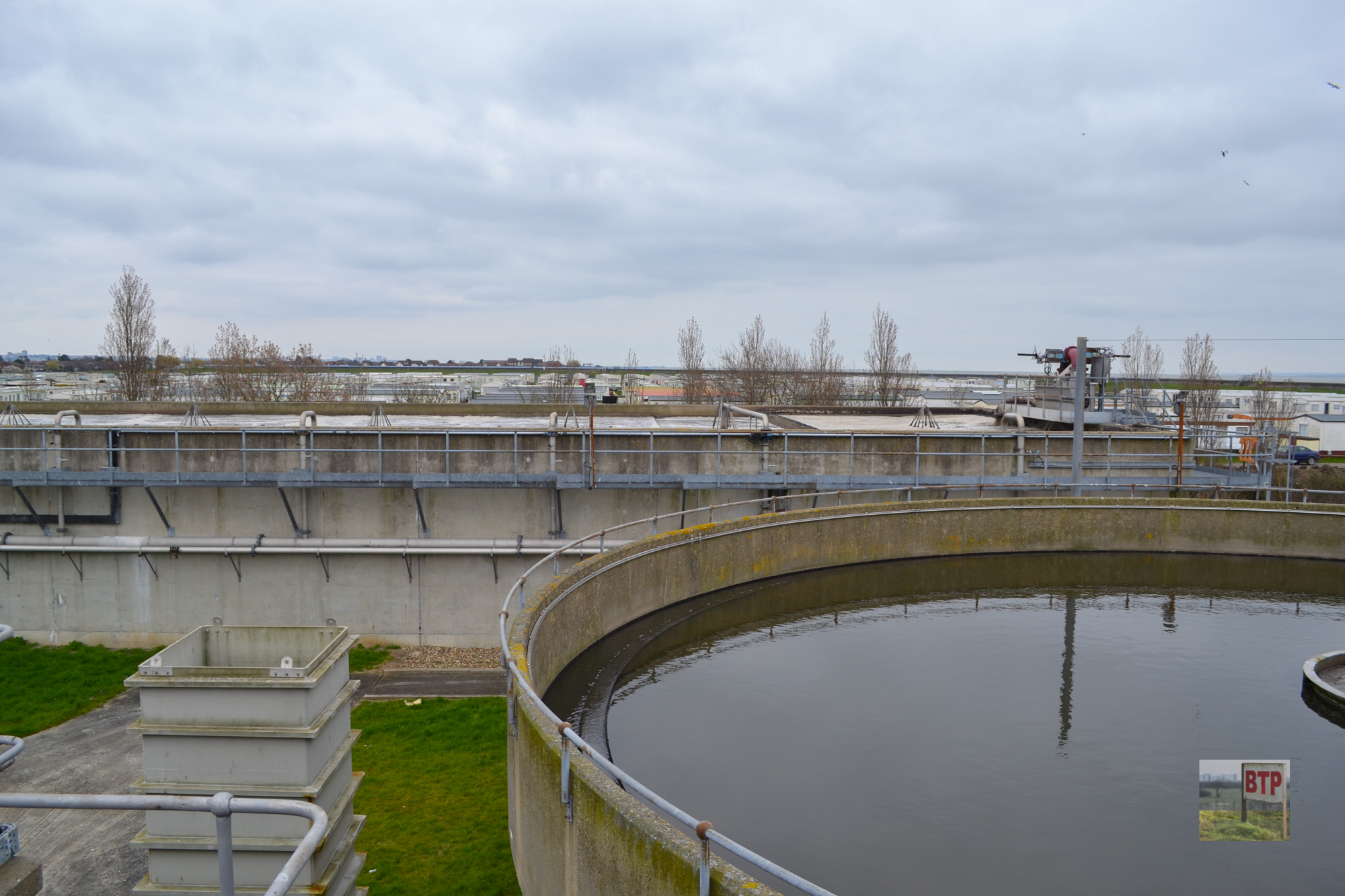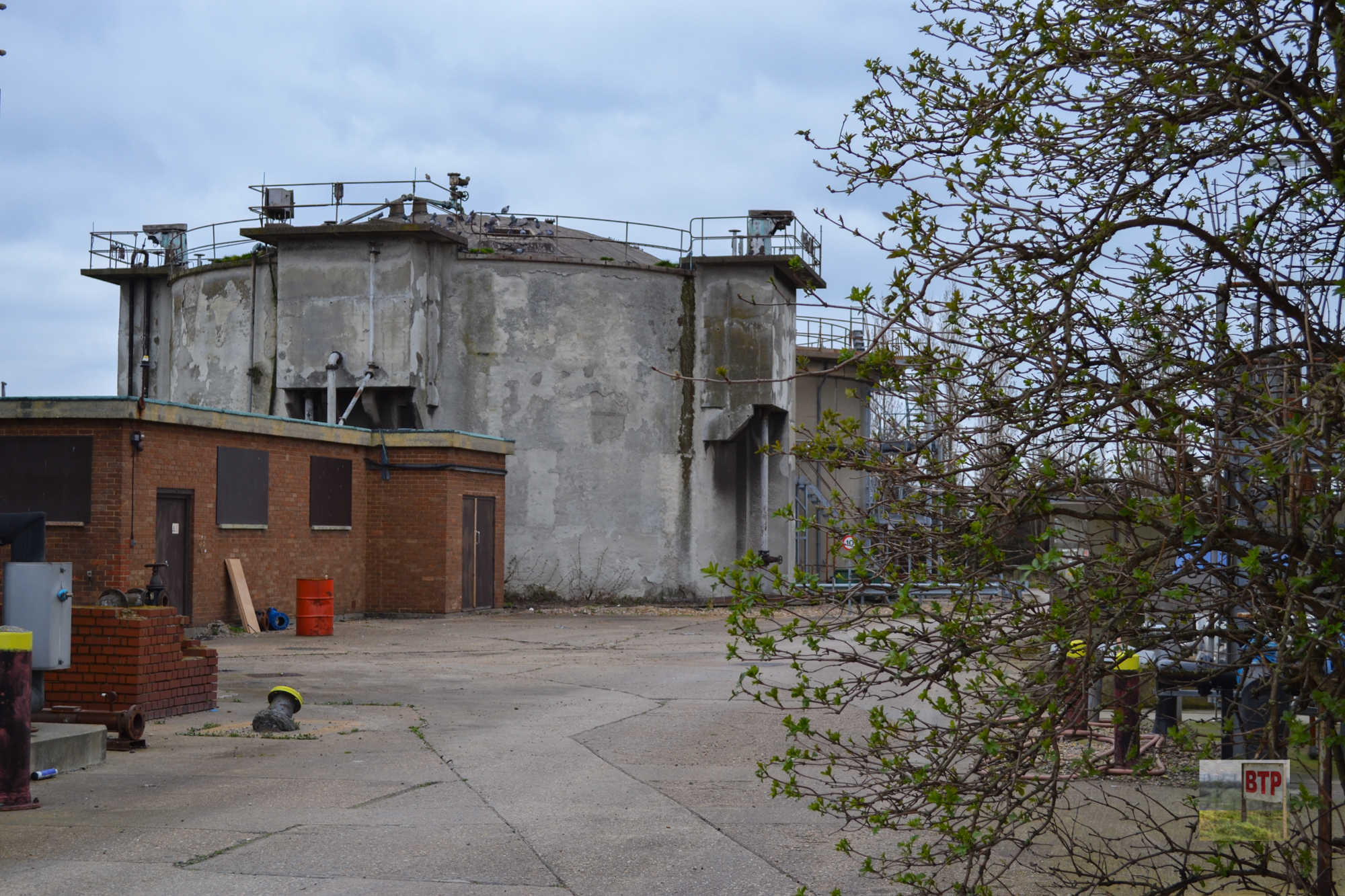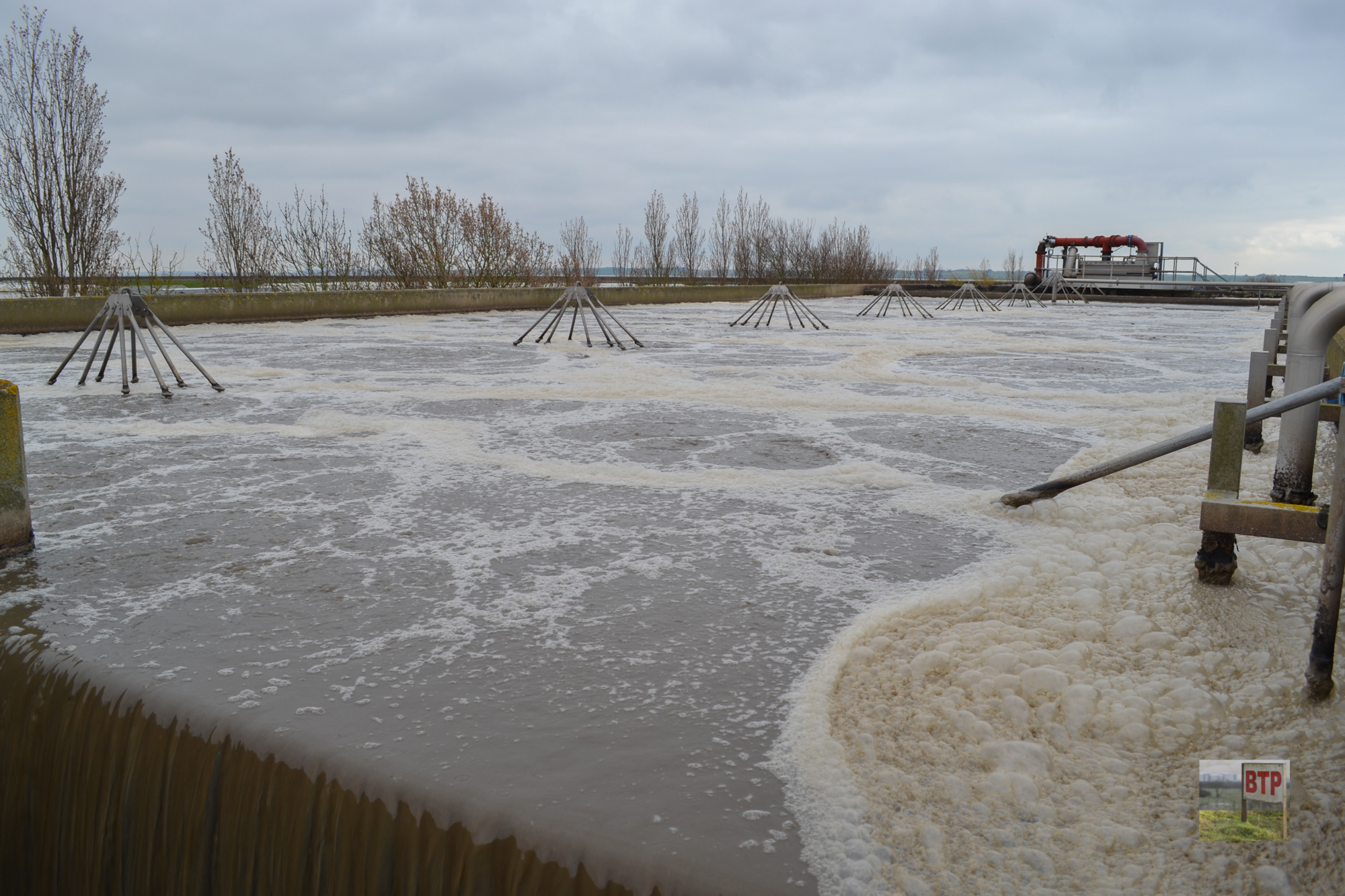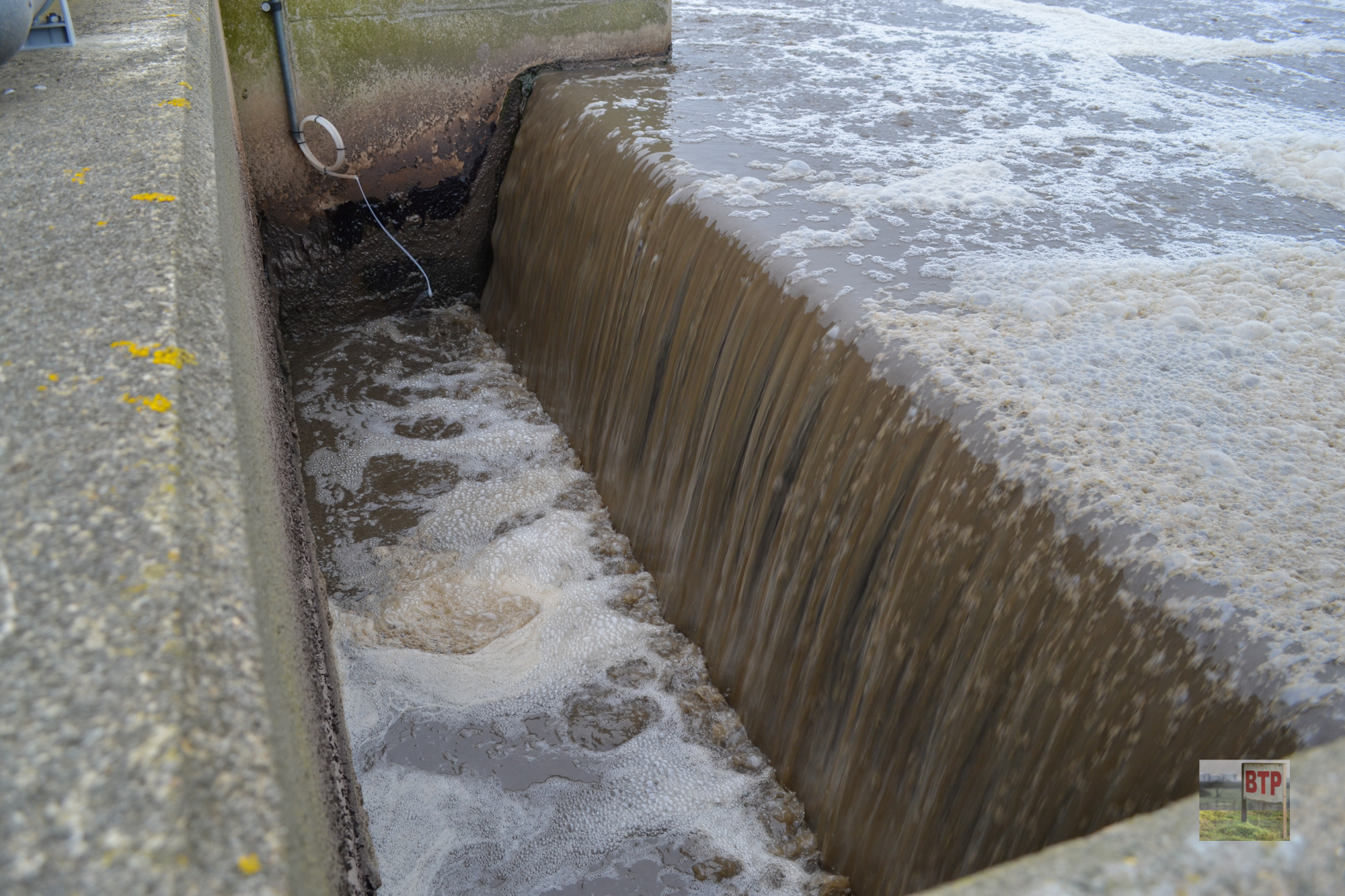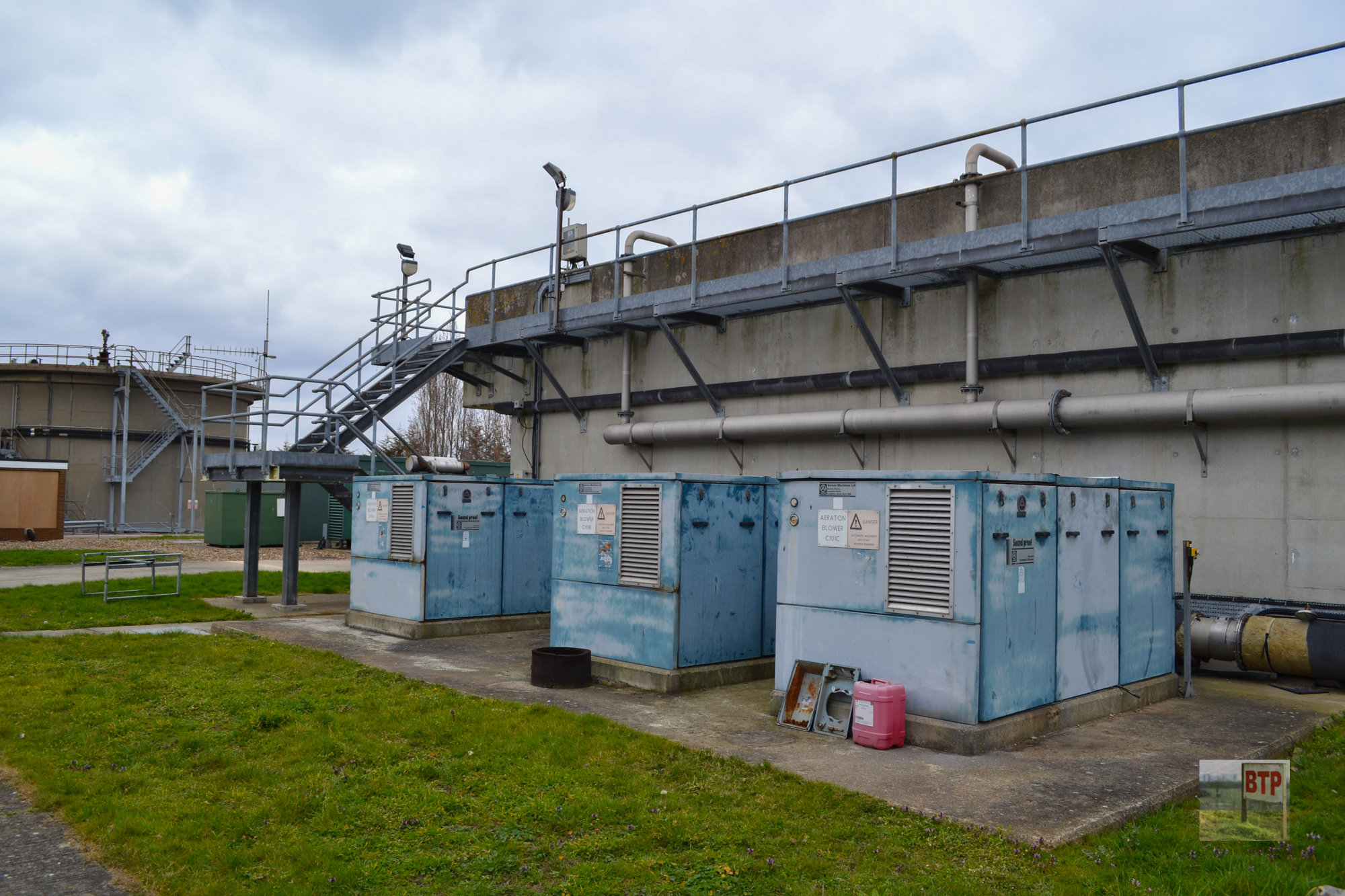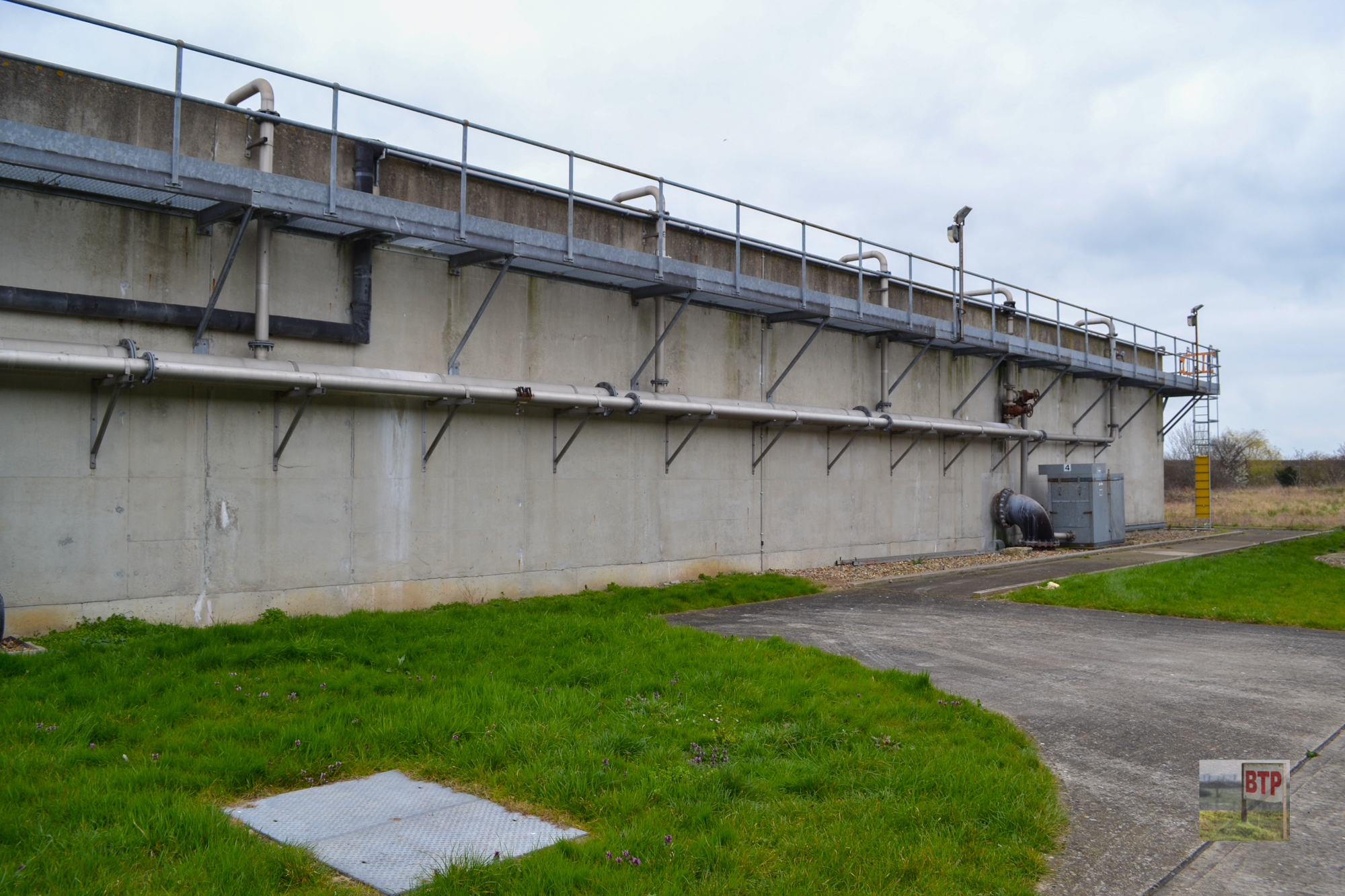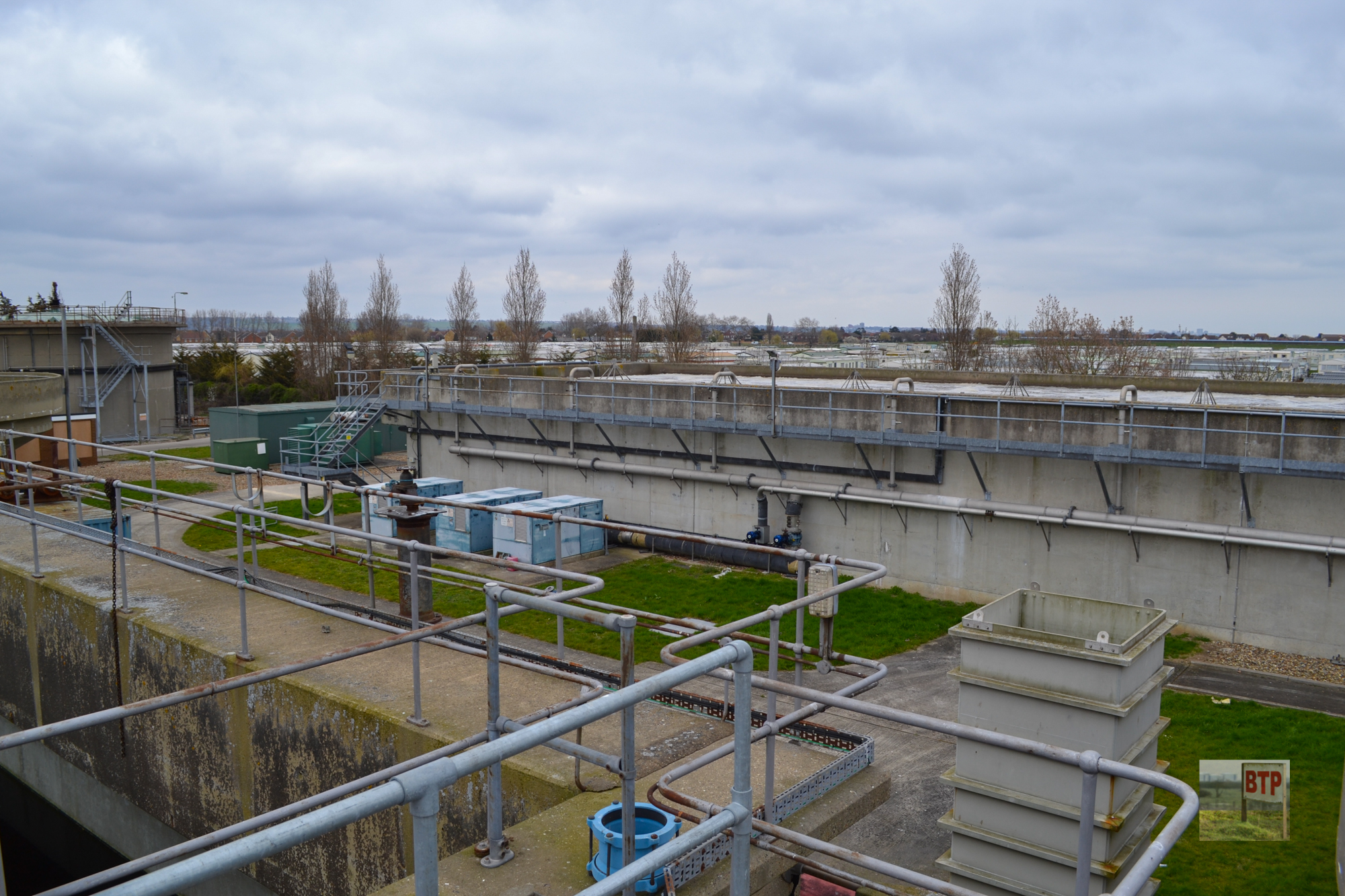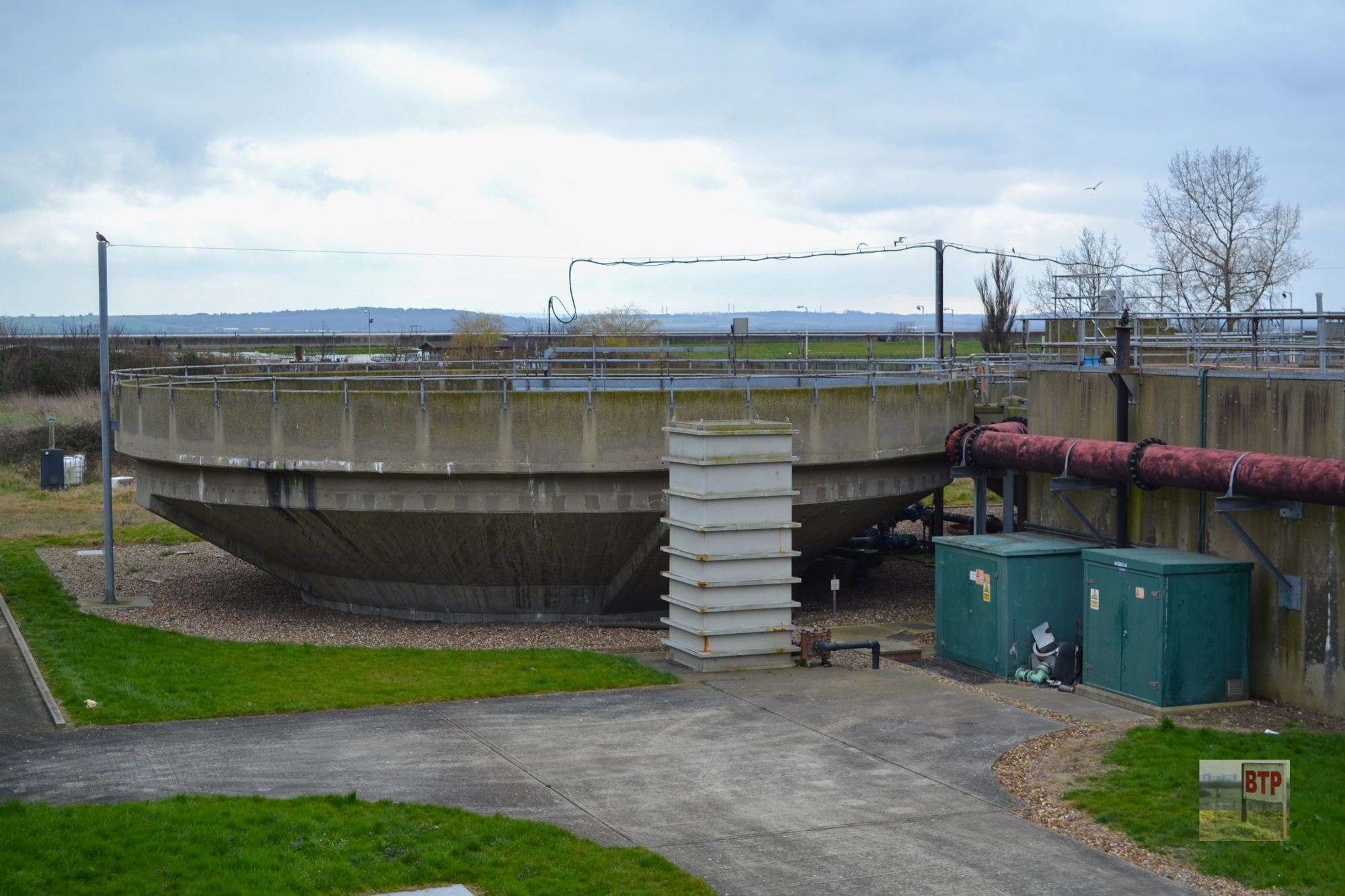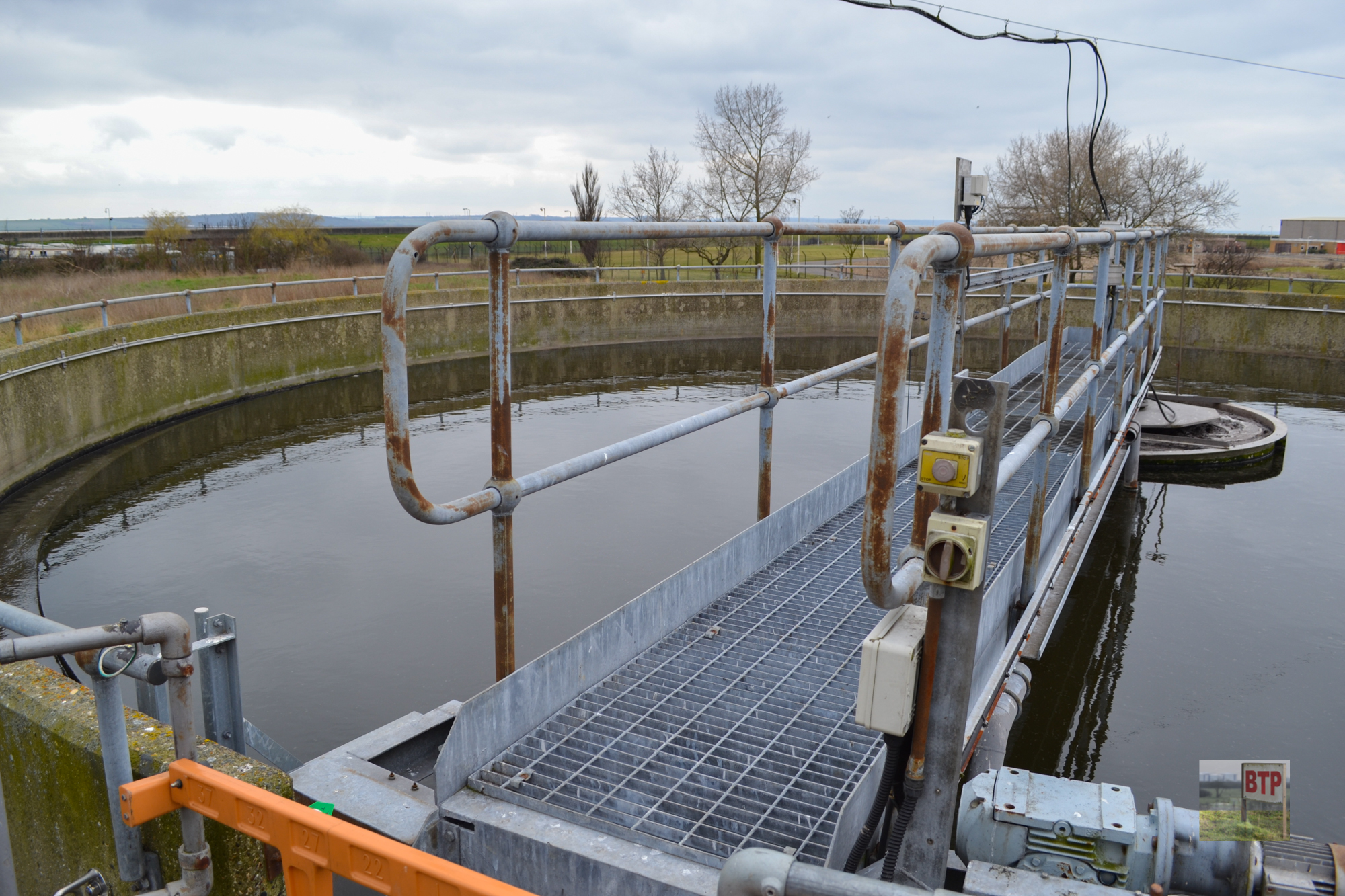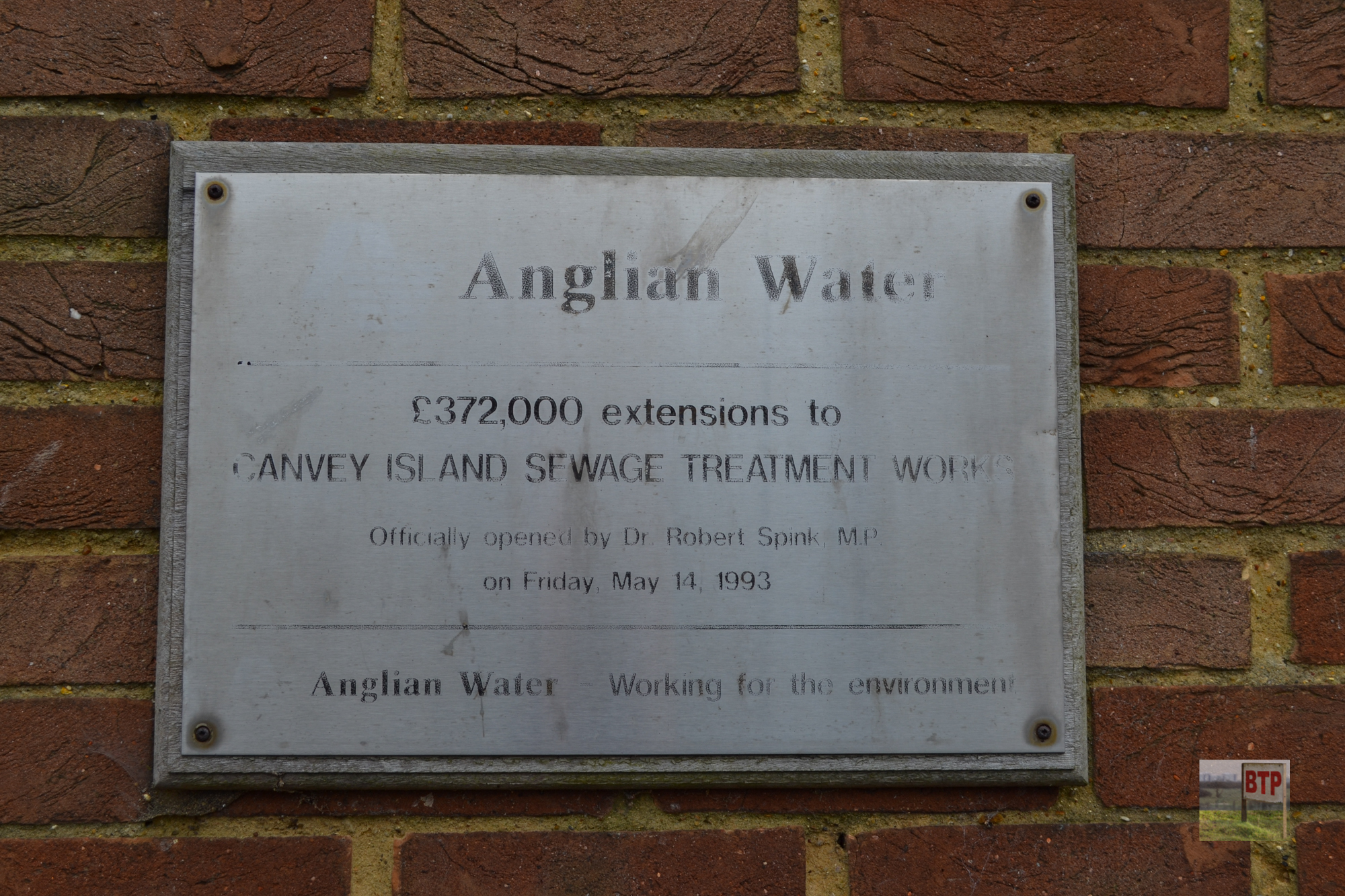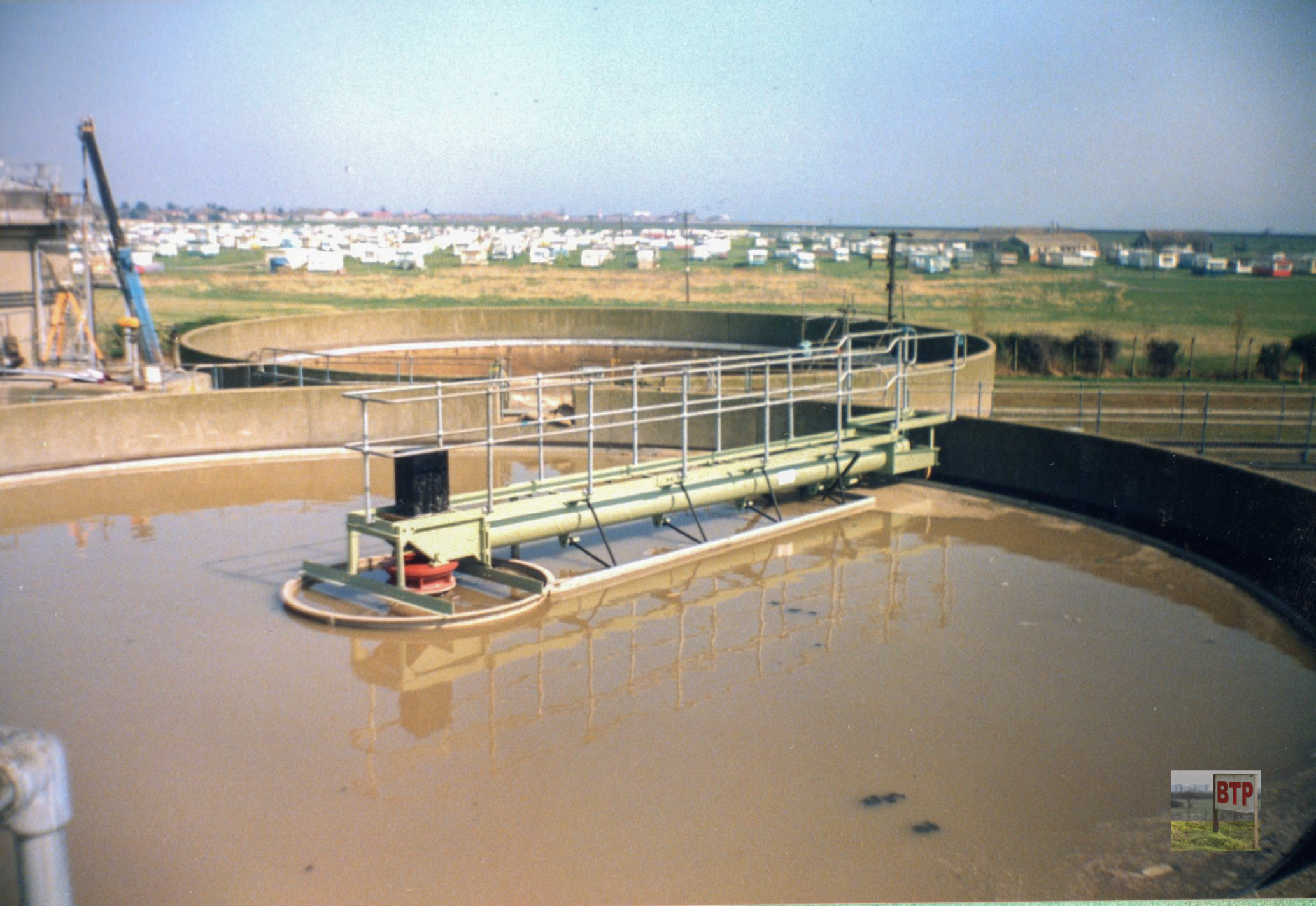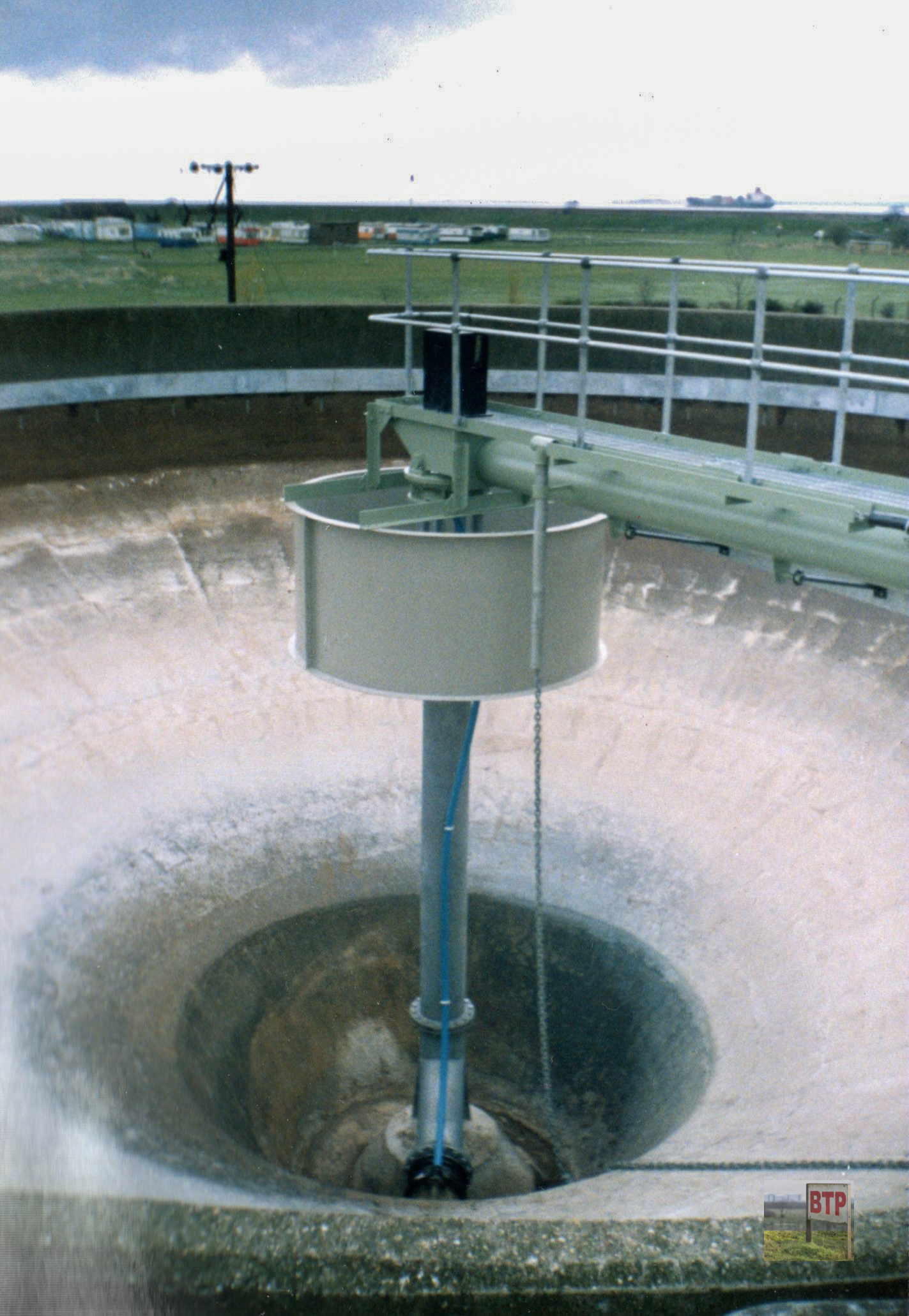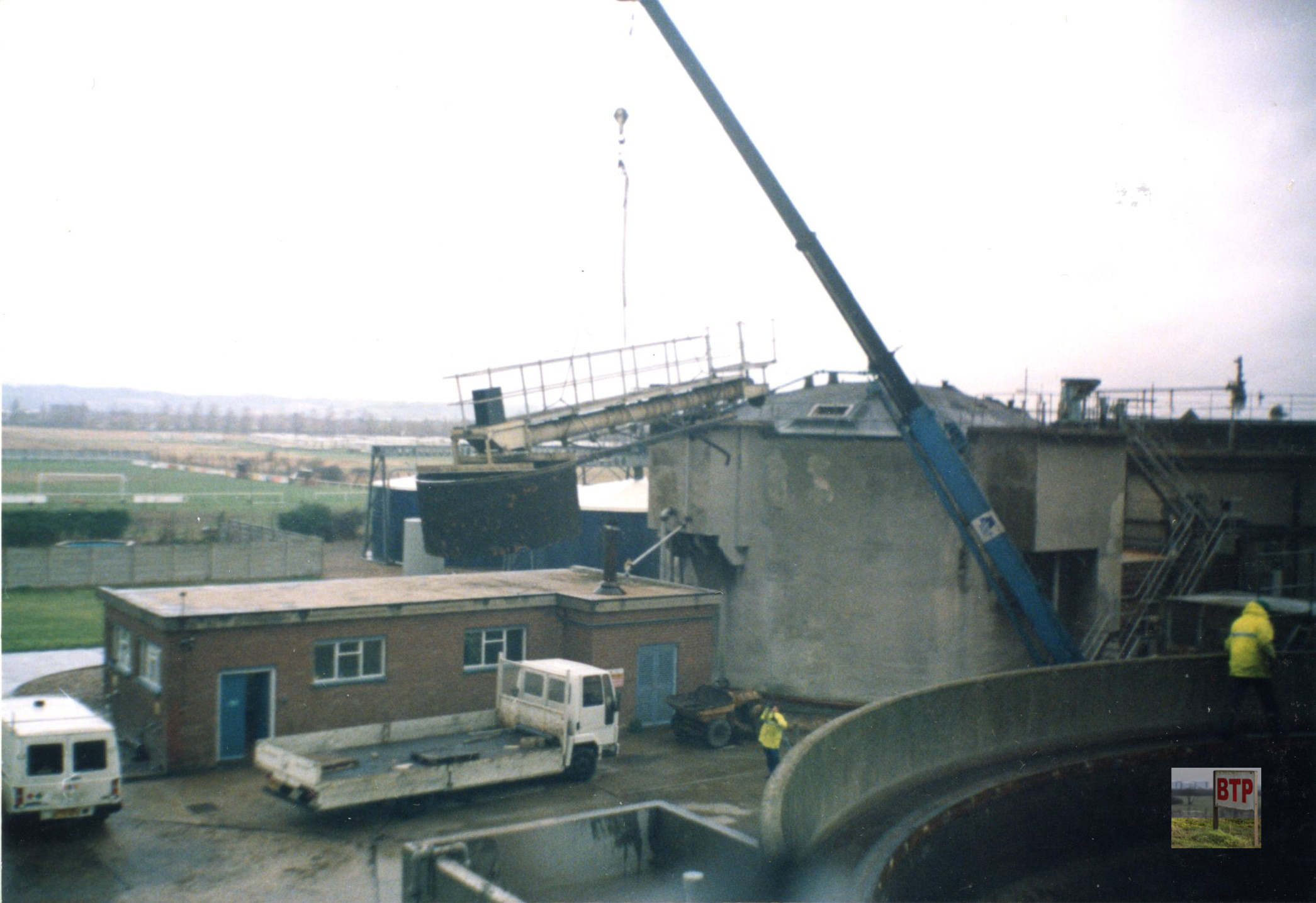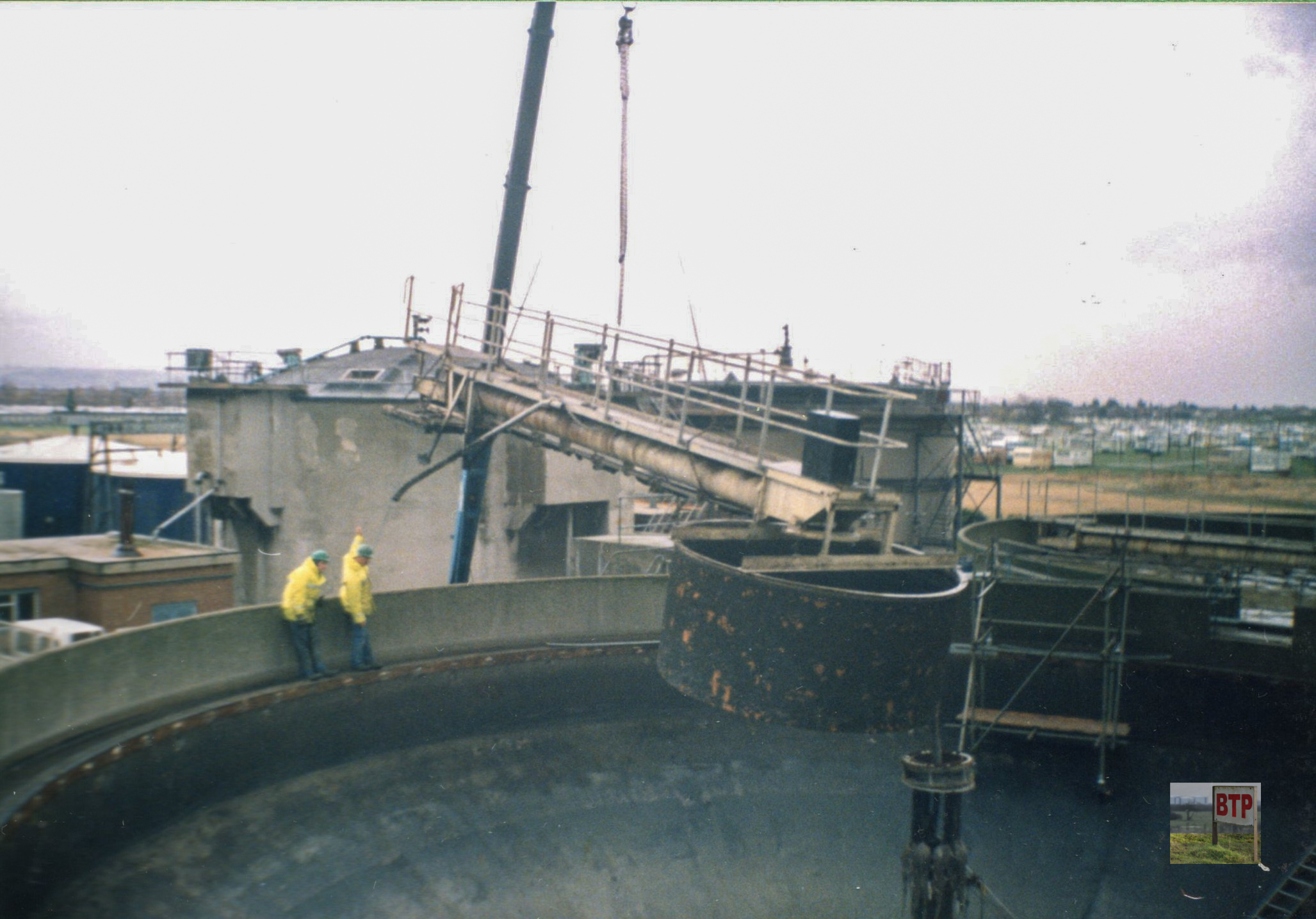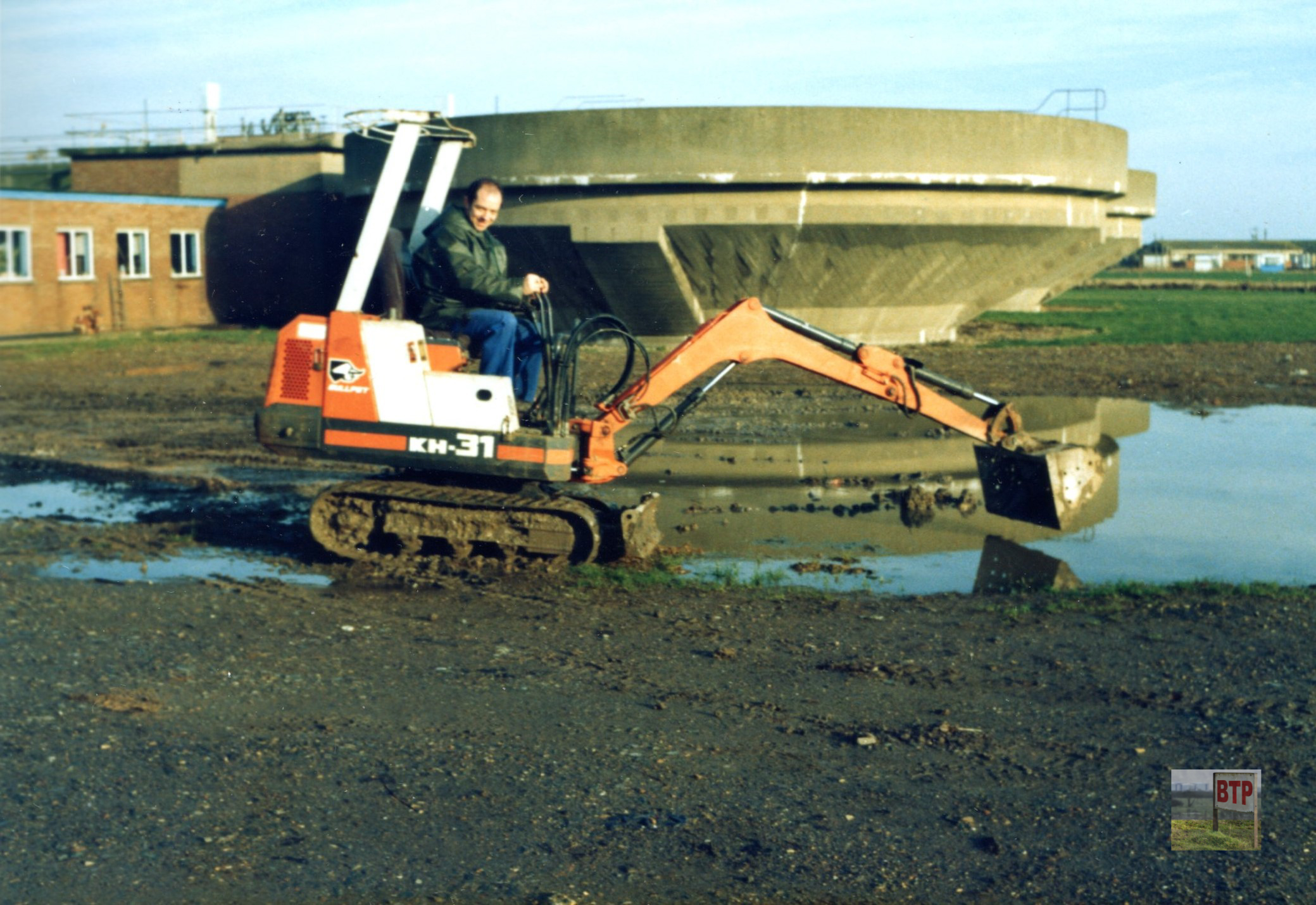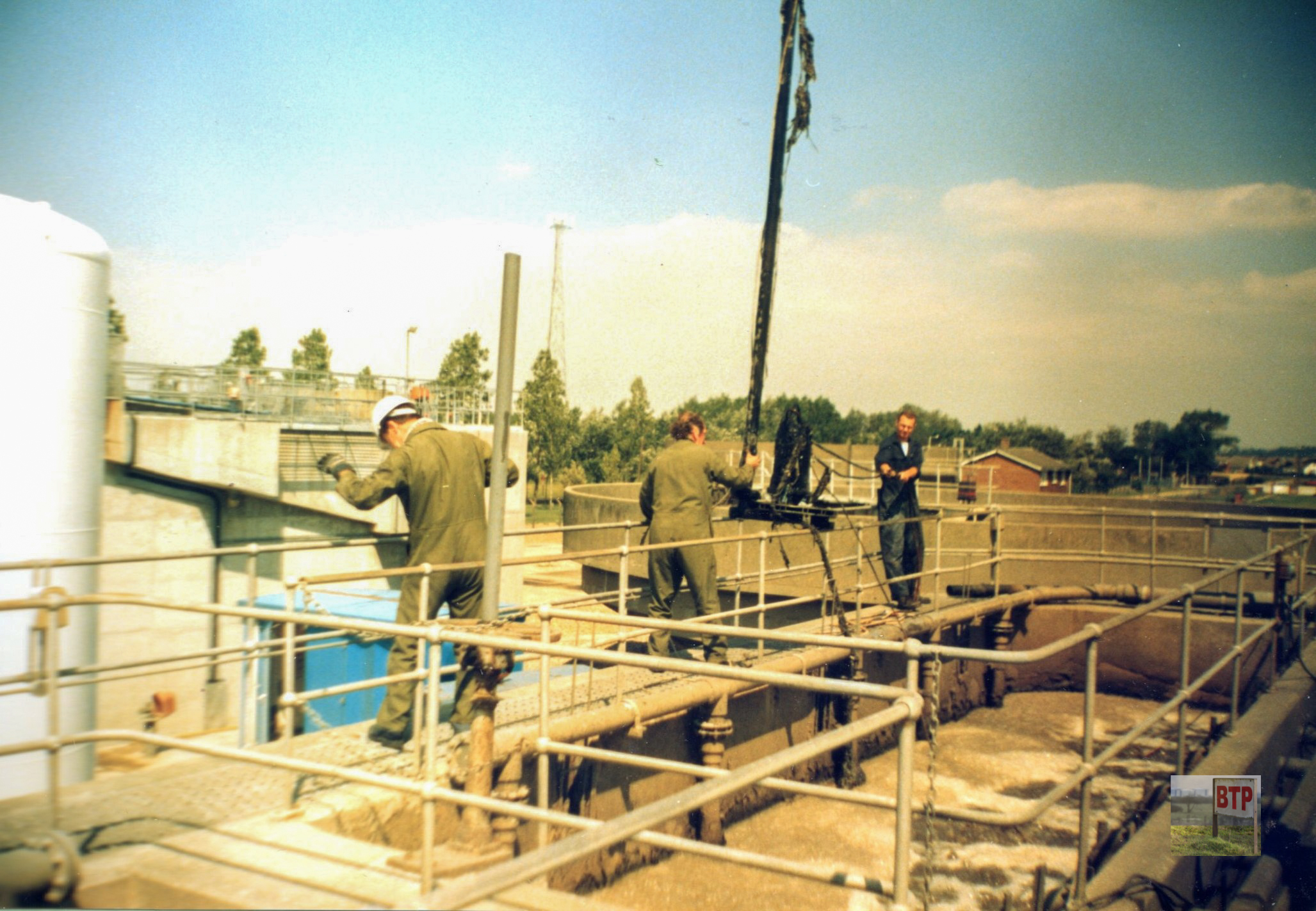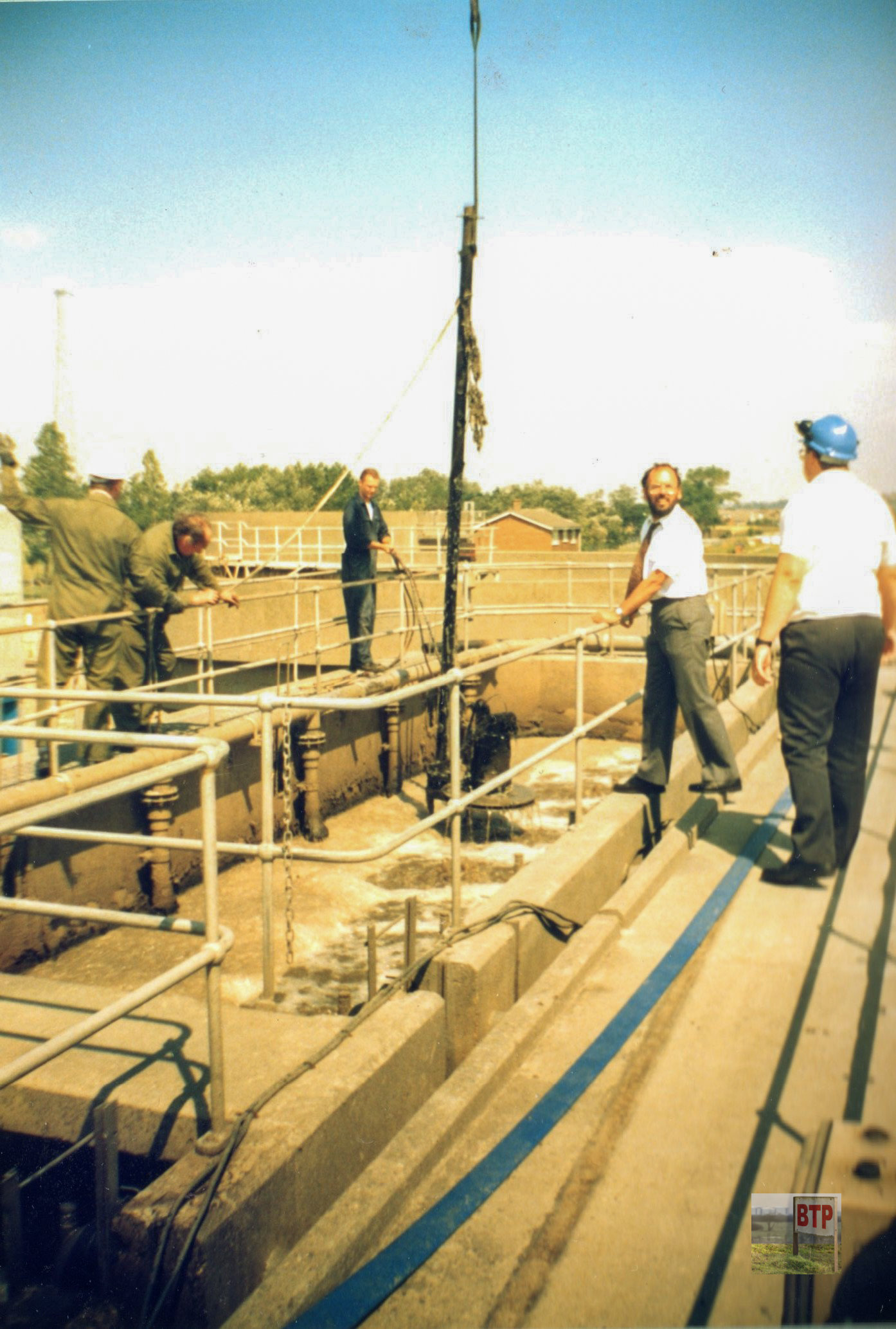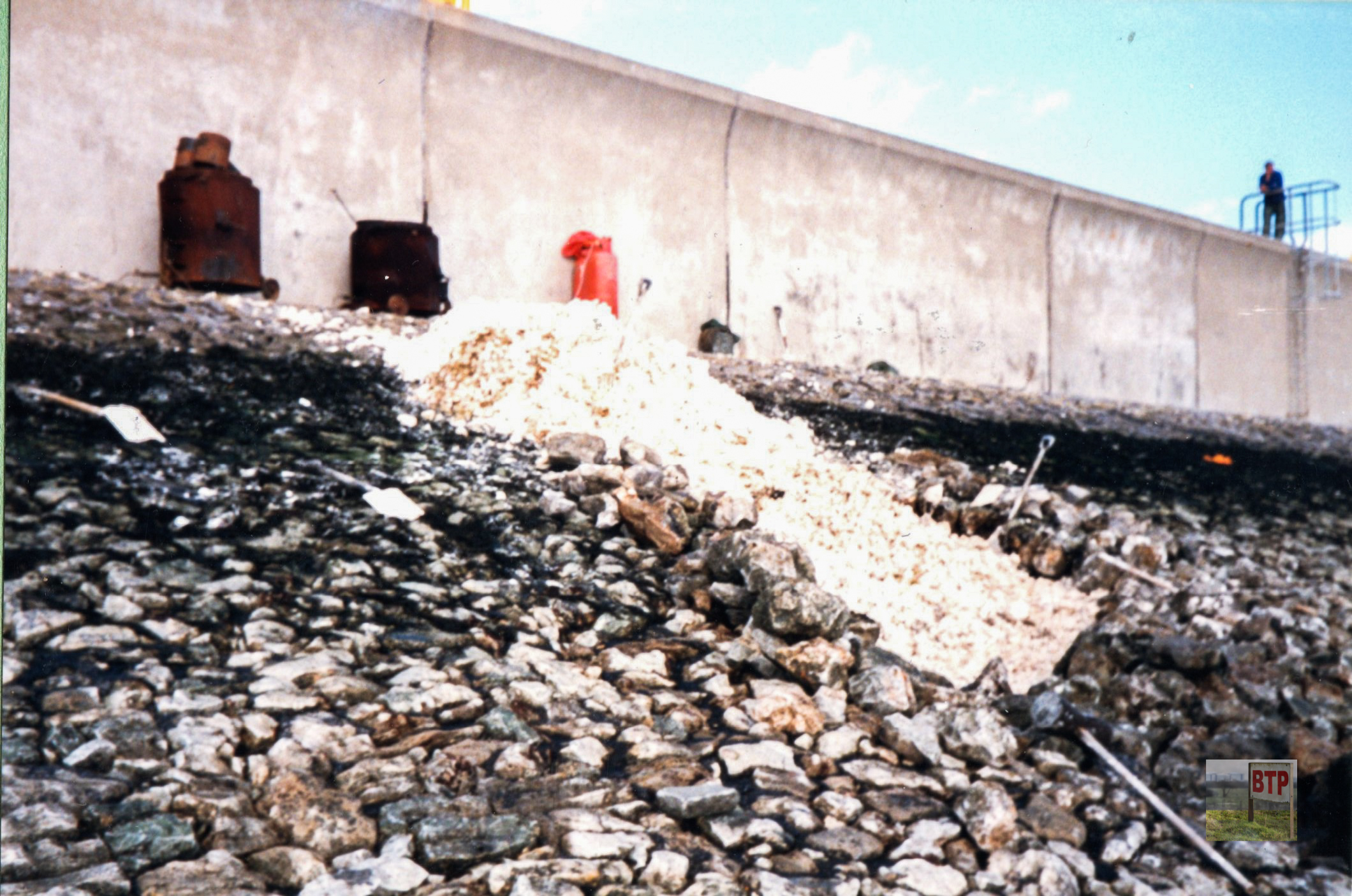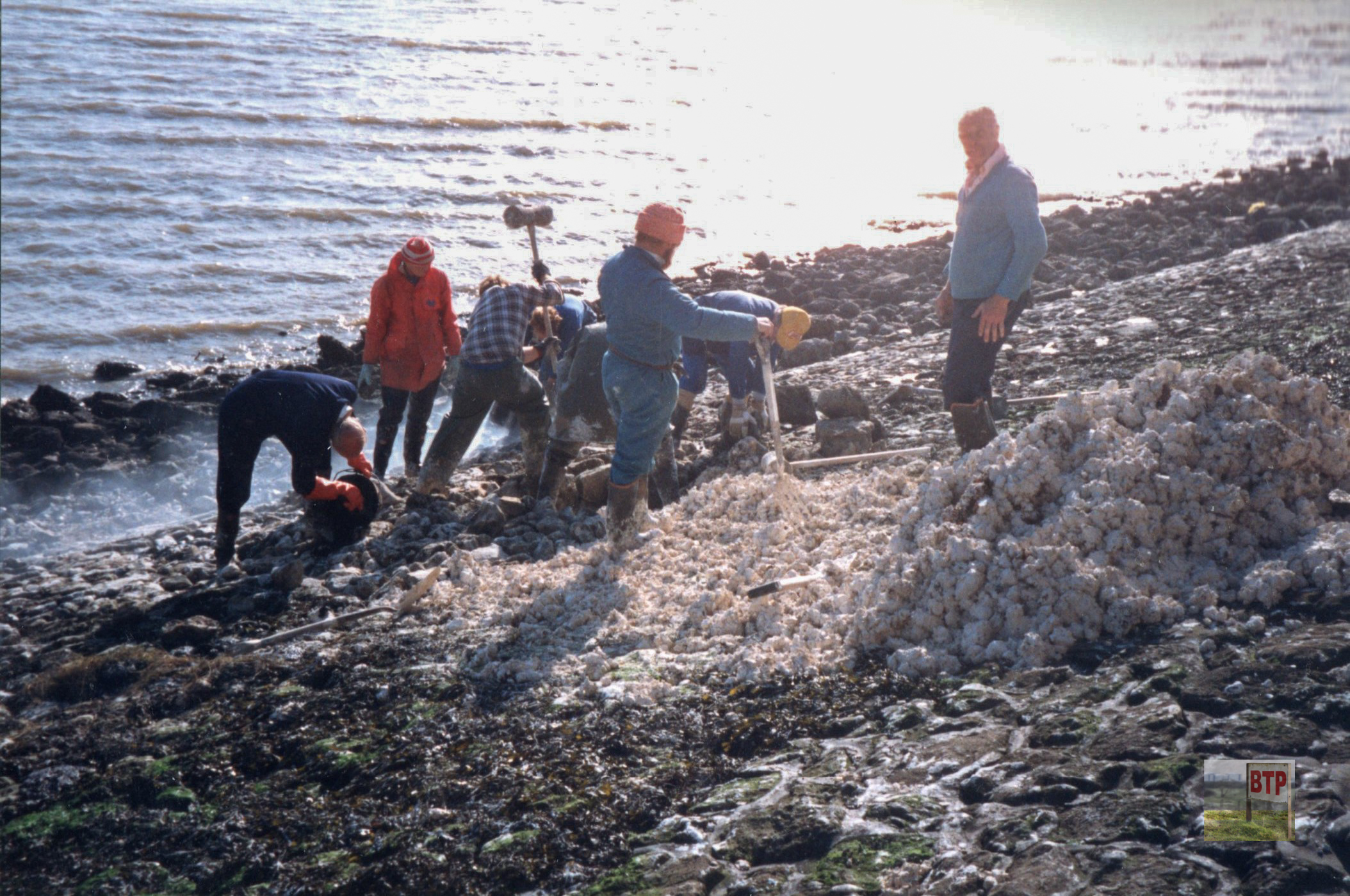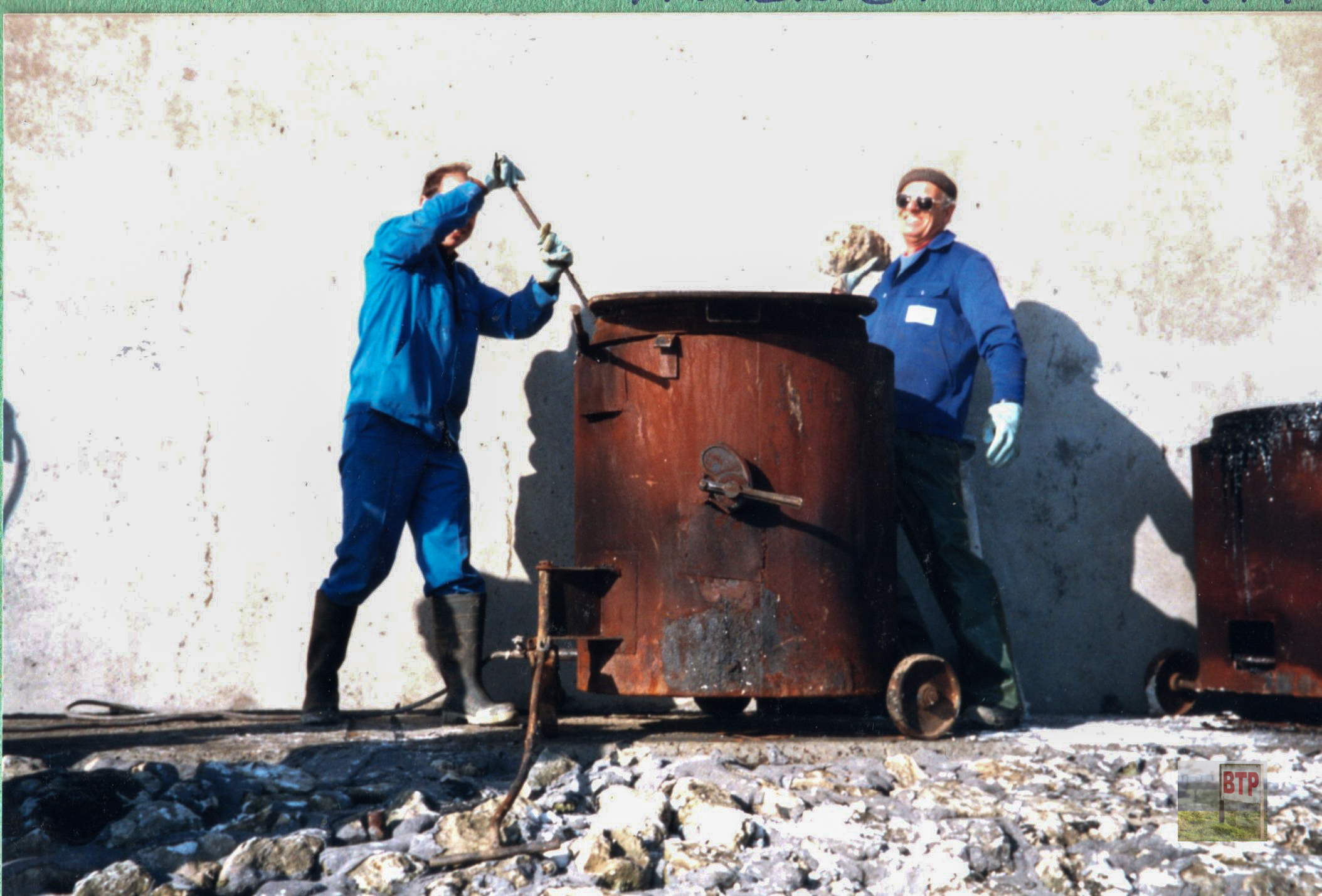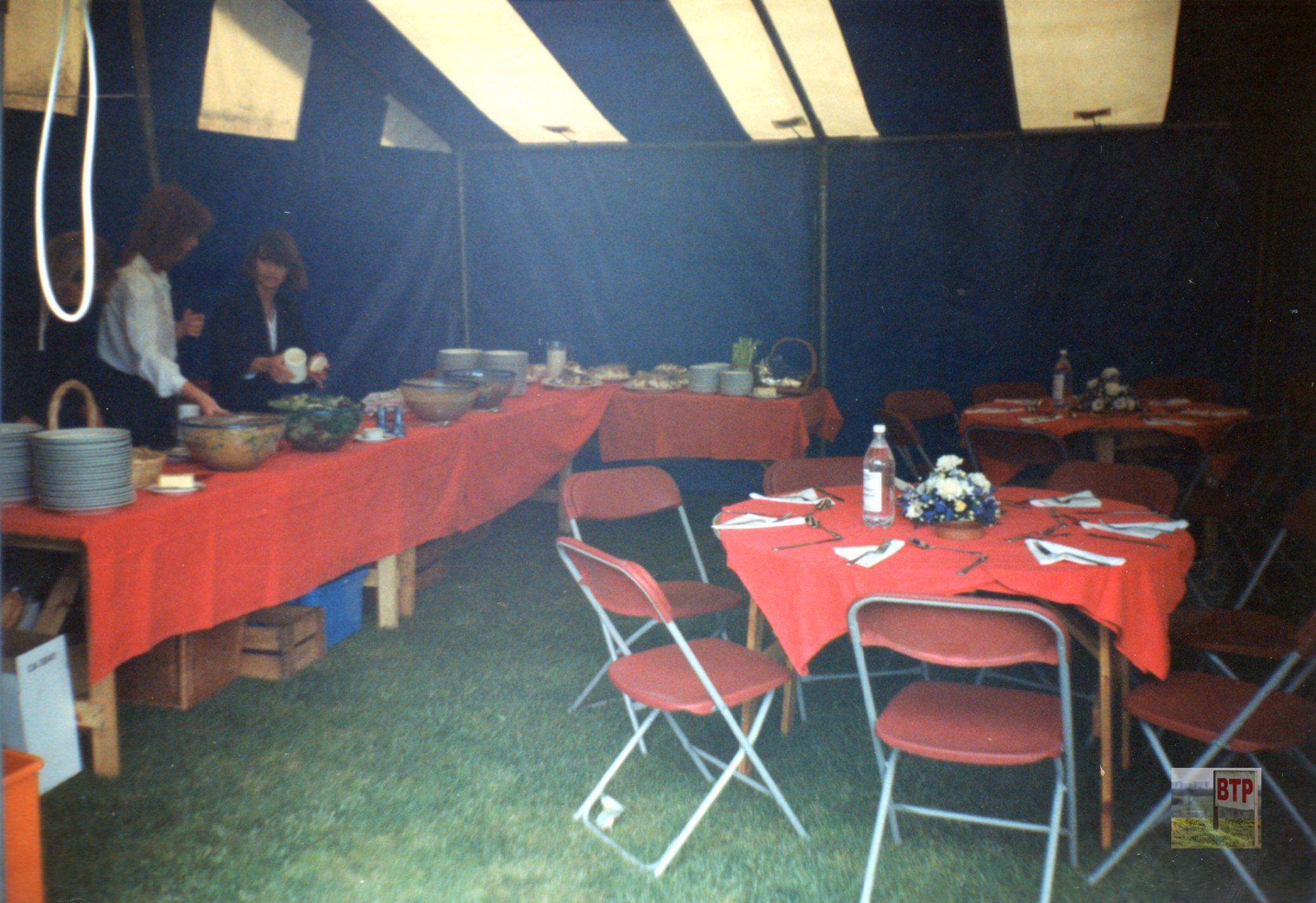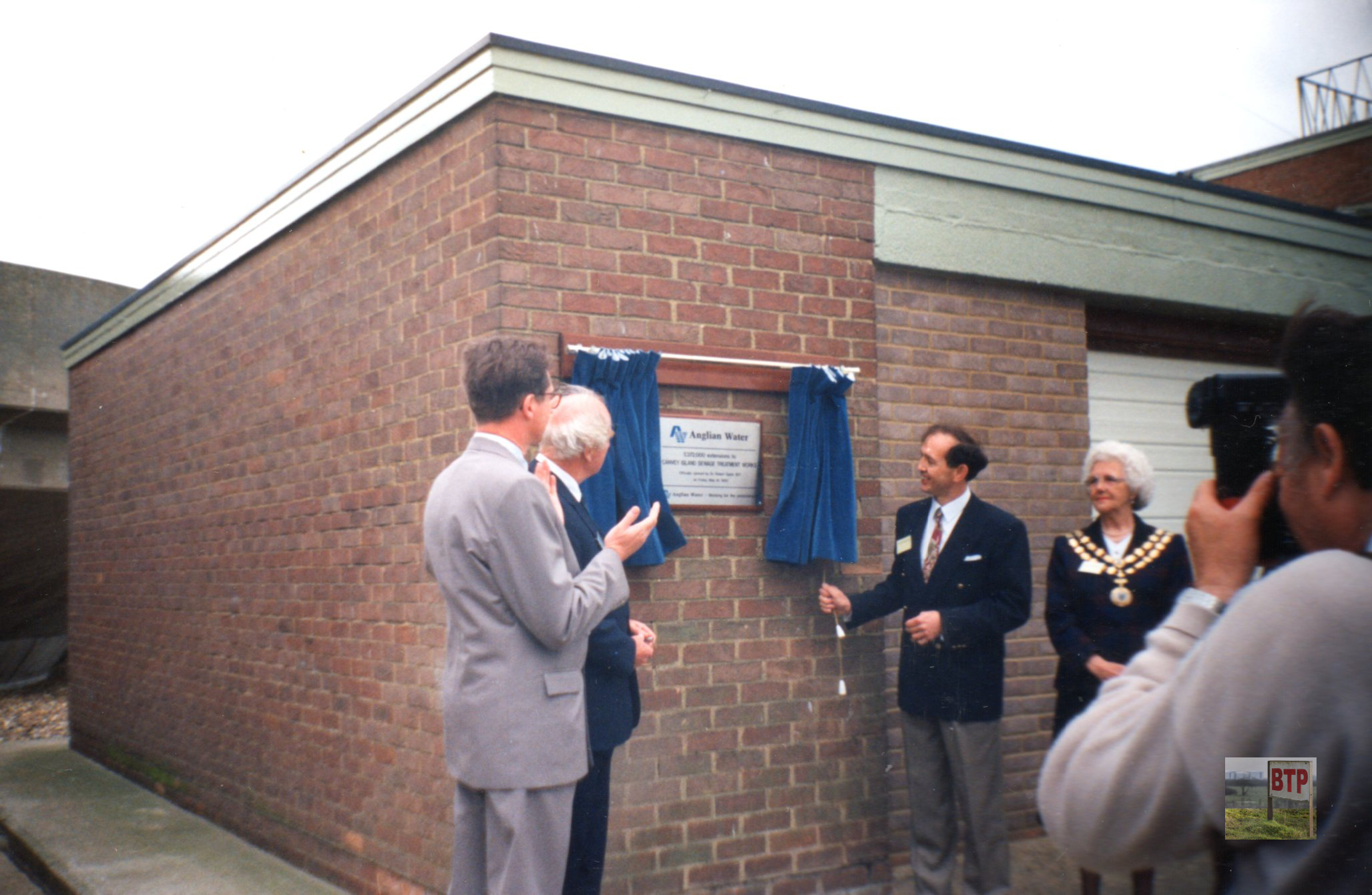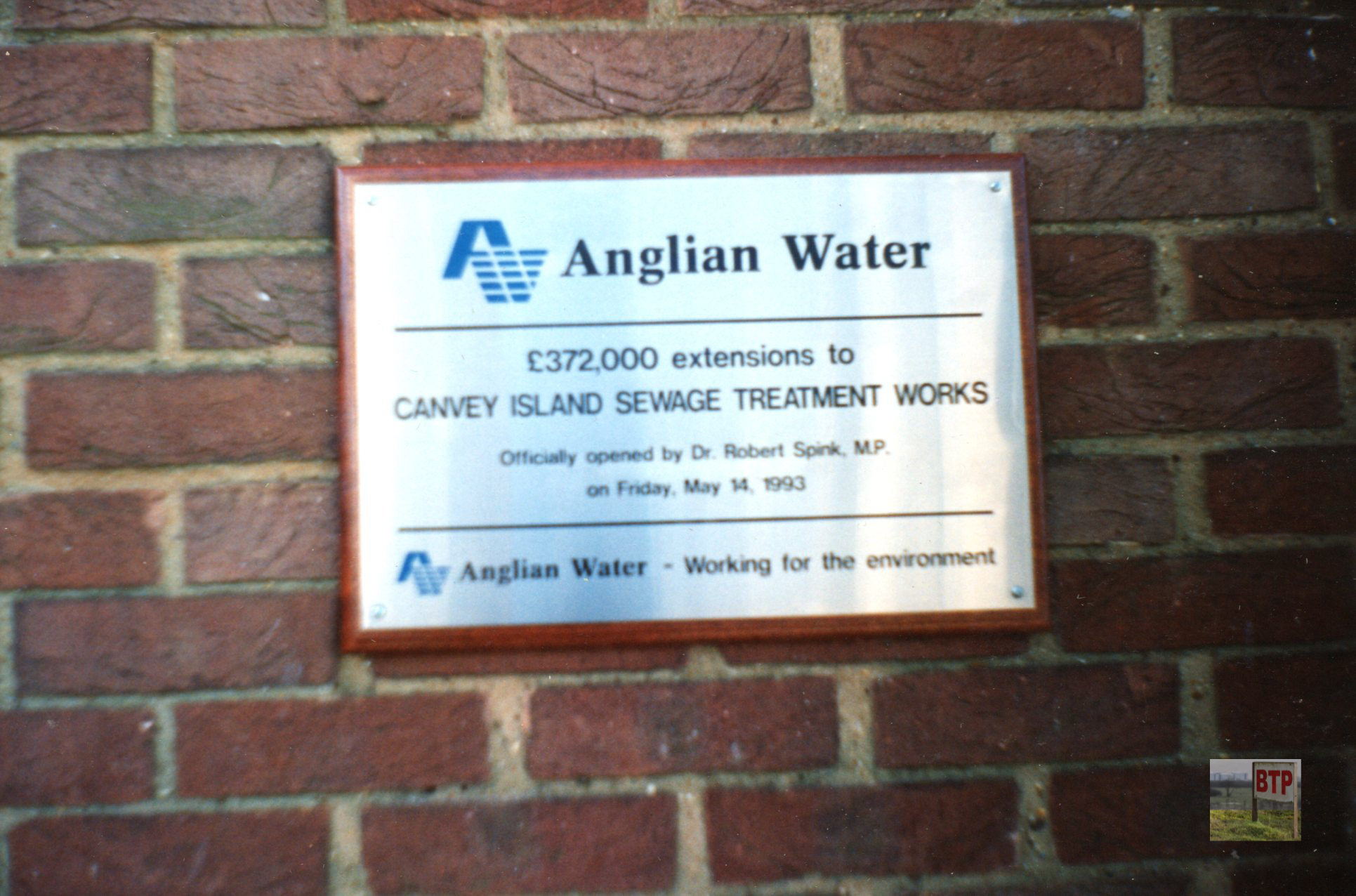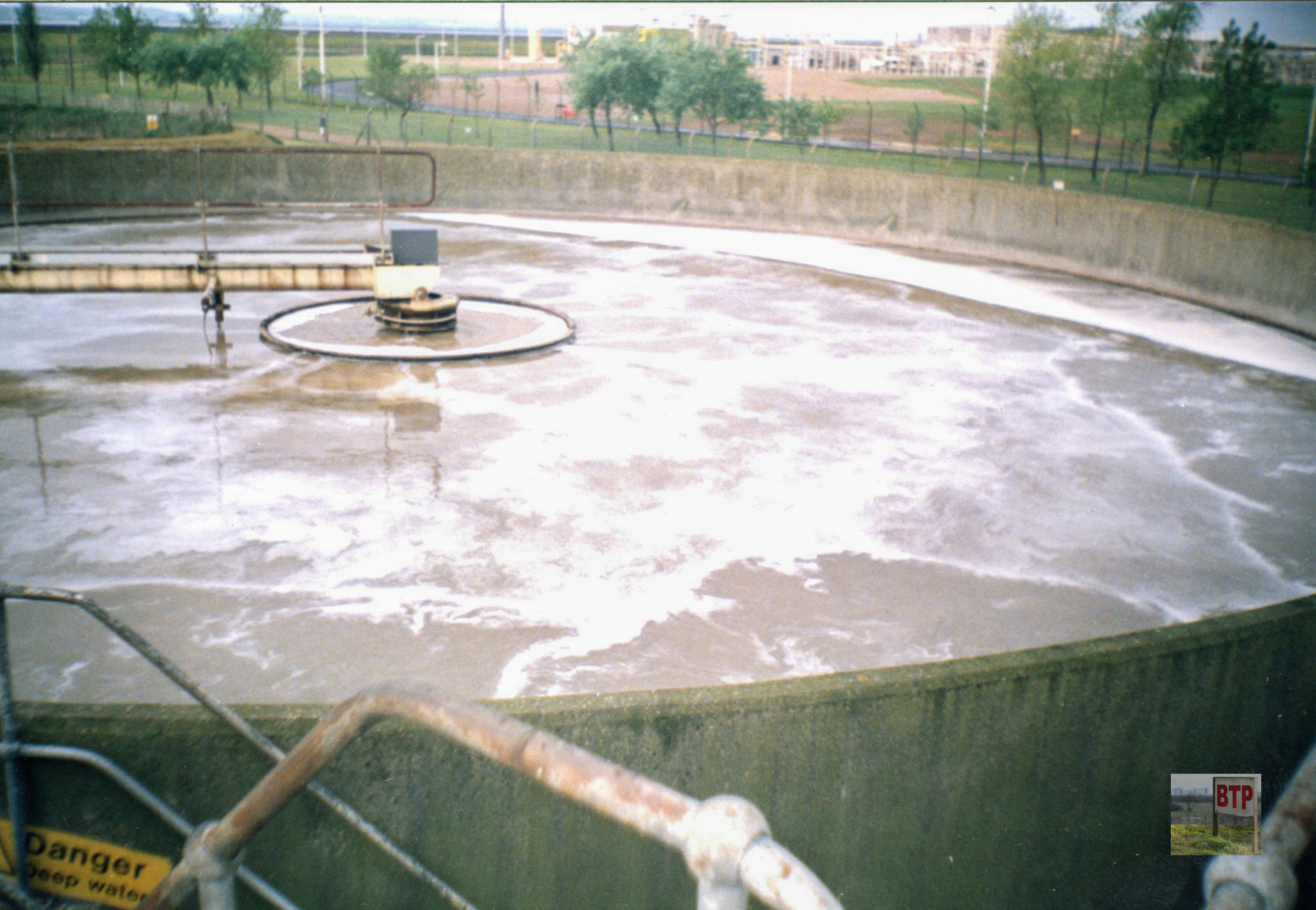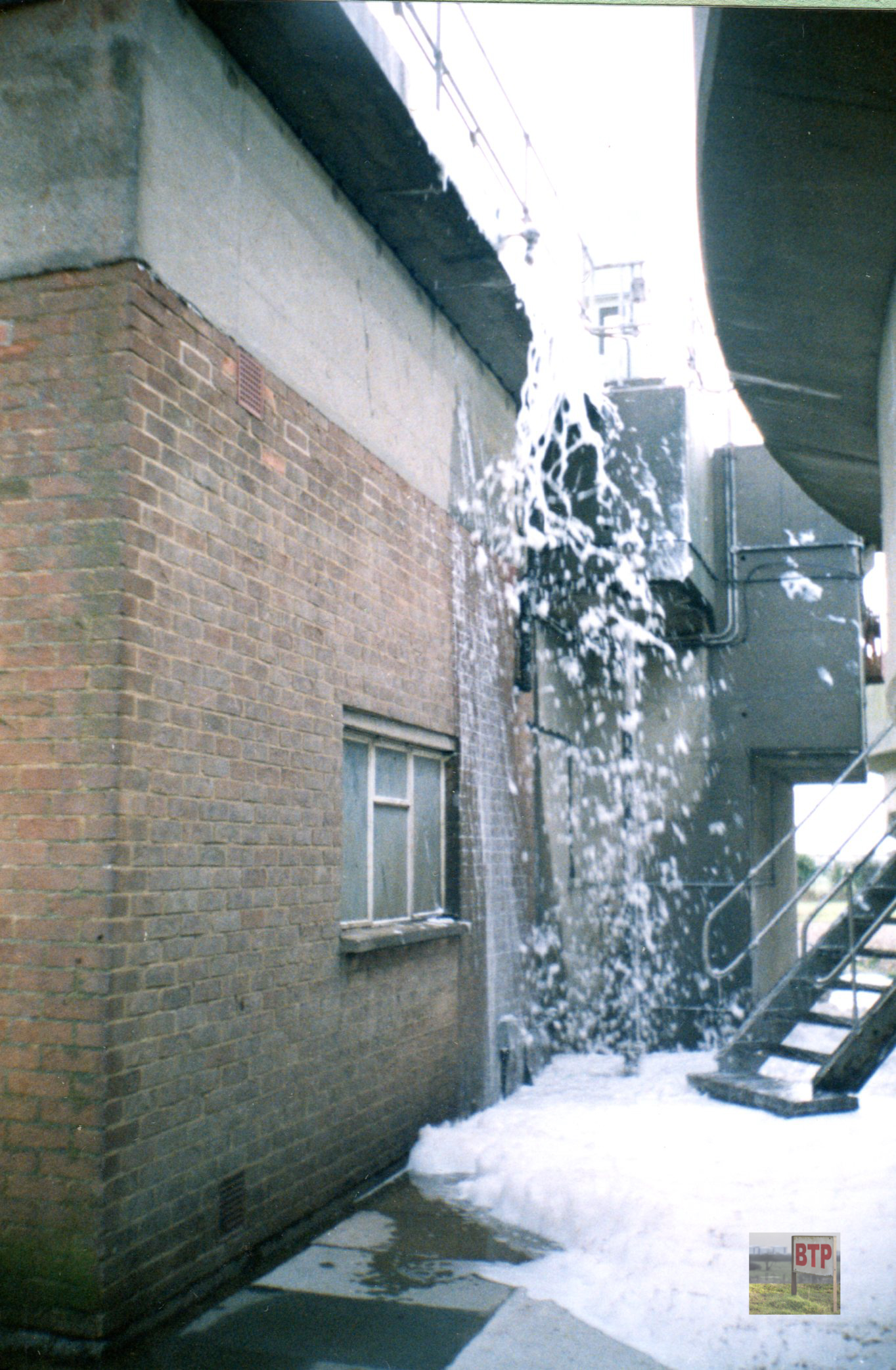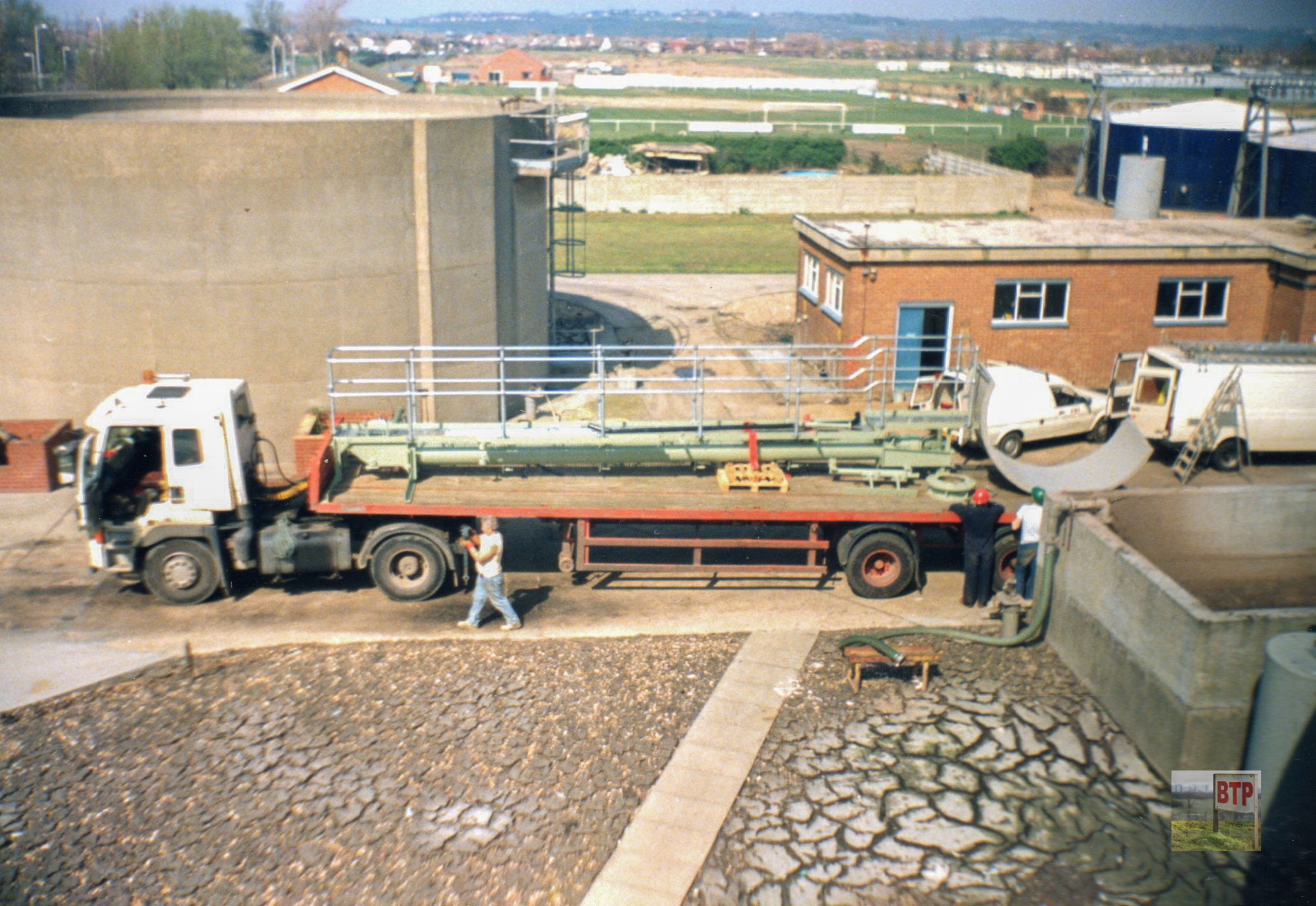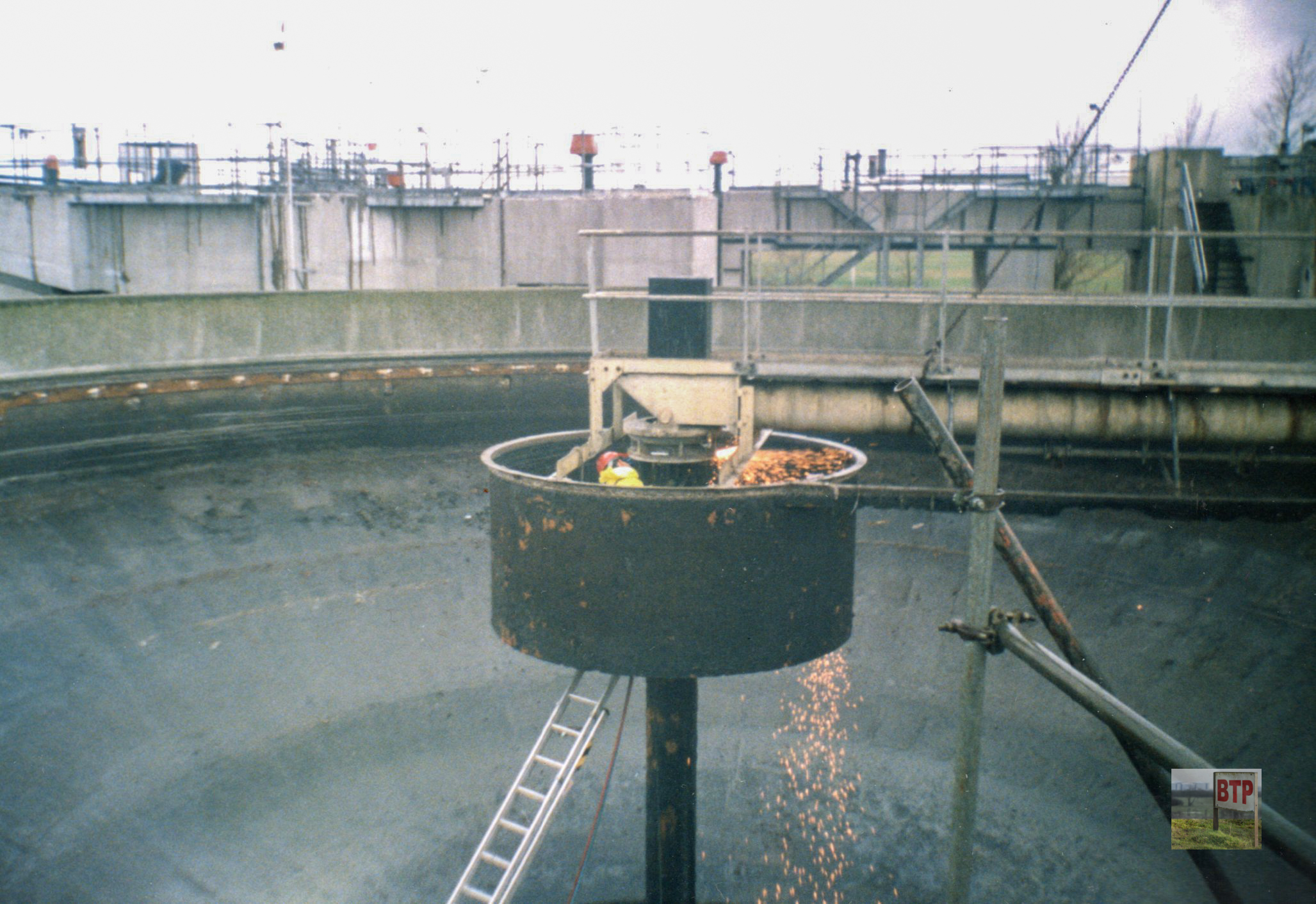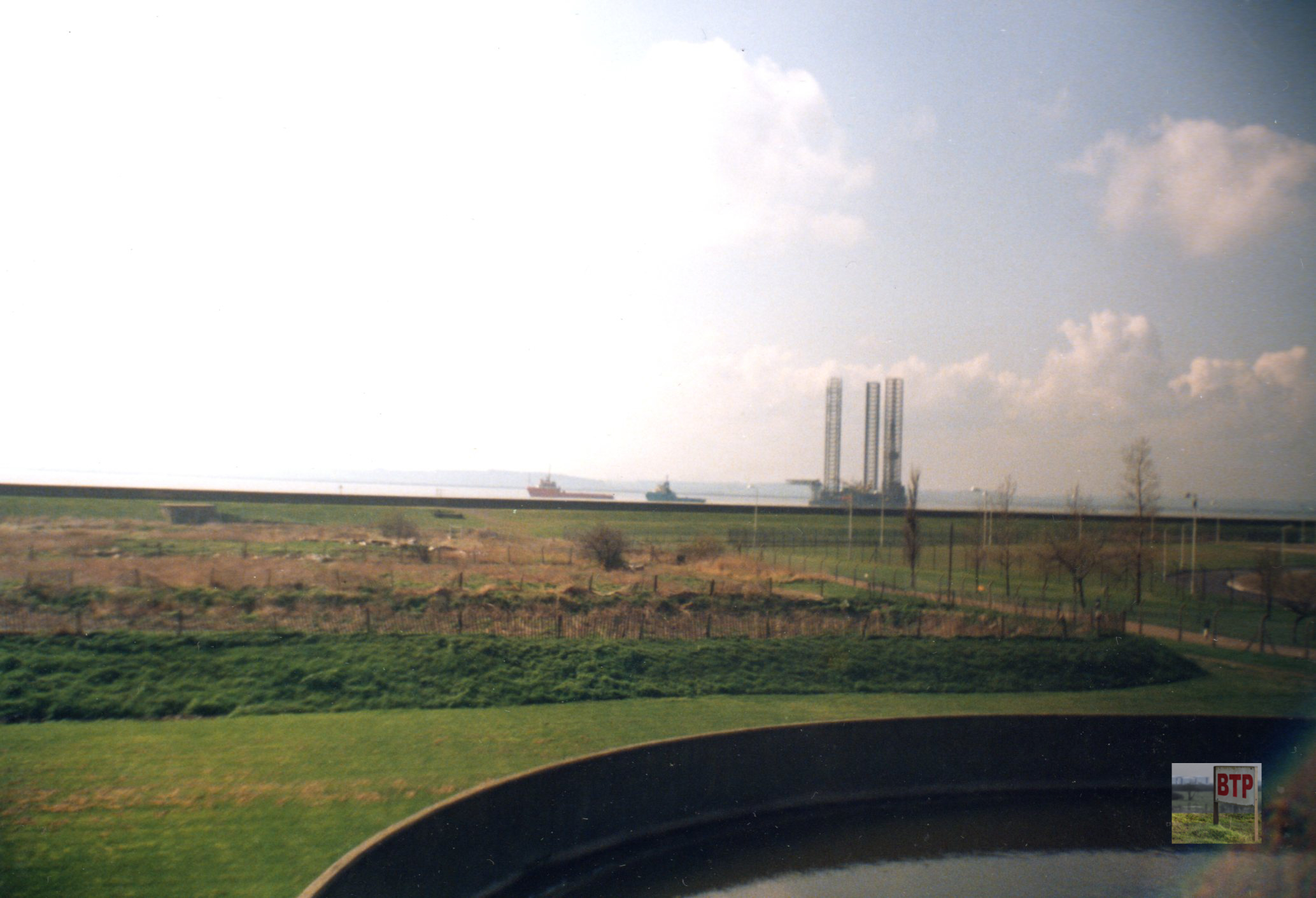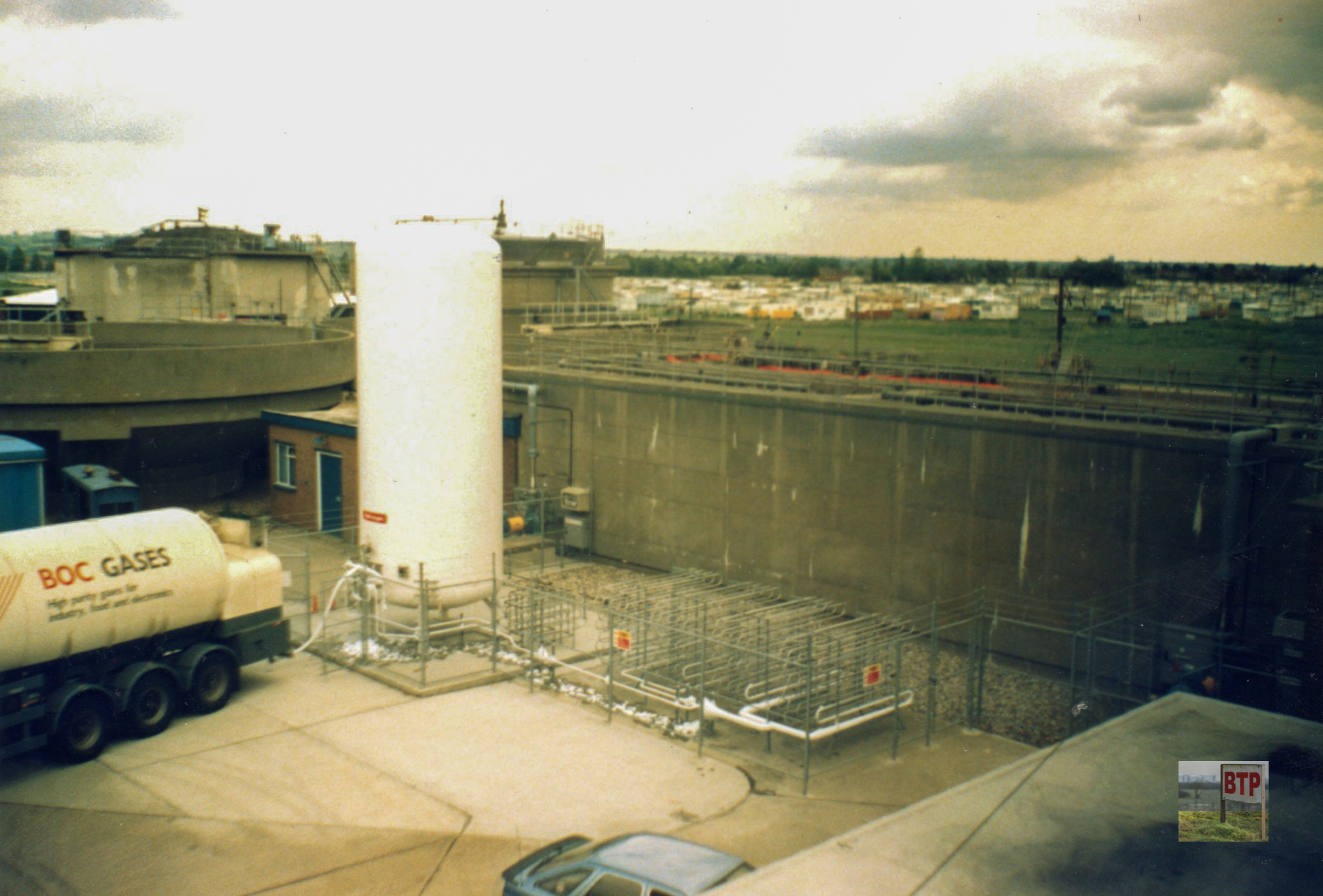In 2011 and 2015 we visited the Anglian Water treatment works by Thorney Bay. As someone mentioned on our Facebook Page “I think this is a real treasure on the island, so glad your covering it!” – make your own mind up!
Historical Background
The history of Canvey Island’s drainage is actually quite an important one. With the island around 8ft below the tide, water and the island have never mixed and drainage has always been important. In the early 1600’s Canvey was occupied by the Dutch and a team of engineers were tasked with draining the island and building dykes to manage the water flow. Some of the original Dutch houses have been preserved and many roads still bear Dutch names. Today the island is divided into zones and the water waste for each area is pumped to a pumping station, for example the one down Long Road. The Long Road pump station was constructed thirty years ago to pump the sewage through an 18 in. rising main to a 24 in. outfall main, laid through the sea wall and extending 500 ft. into the river. New pumps have been installed in the pumping station since, with a 24 inch main laid parallel. From Long Road the waste goes to the Thorney Bay site, which was opened in 1967, where the sewage is ‘cleaned’ and is then pumped into the Thames.
How it works
Today, the site is still used on a daily basis. (For those of you that like ‘technical bits’ then you’ll love this as it explains what the site does.) Canvey Island Sewage Treatment Works is an “Activated Sludge” treatment site taking in and treating all the waste water flows from Canvey Island. It is fed from the Terminal Pumping Station in Long Road which is in turn fed by many smaller pumping stations all over the island. The flow enters the site and first passes through large screens to remove mainly rags but also any other large objects which would cause problems to the process should they get through, any flows during storm conditions which the works is not capable of treating overflow a weir and after screening is discharged to sea. Next the flow passes through a grit collector which removes all the smaller heavy objects which would cause blockages and wear to pumps and pipes. These 2 parts of the treatment process are known as Preliminary Treatment.
The flow, which is raw sewage, then passes through tanks know as Primary Settlement Tanks (PST’s) where the flow is slowed right down and enables the heavier solids in the flow to sink to the bottom of the tank where it is removed and tankered off site to a treatment centre off of the island. The flow from the PST’s now enters a large tank called an Aeration Tank filled with what is called Settled Sewage. This liquid is now free from rag, grit and settleable solids and is just cloudy waste water. The tank is full of bacteria and other micro organisms that feed on the organic matter in the cloudy water and are constantly fed with oxygen to promote an ideal environment for them to exist and multiply. The contents of this tank are known as Activated Sludge. After the flow has passed through this tank, which may take anything from 6 to 24 hours, it passes through 2 more settlement tanks where the once cloudy sample full of suspended fine solids now settle to the bottom of the tank and are removed as was the sludge in the PST’s. The now clear treated liquid passes over a weir and is discharged to sea and has to comply with strict parameters as set by the Environment Agency. This process takes place constantly day in day out throughout the year.

